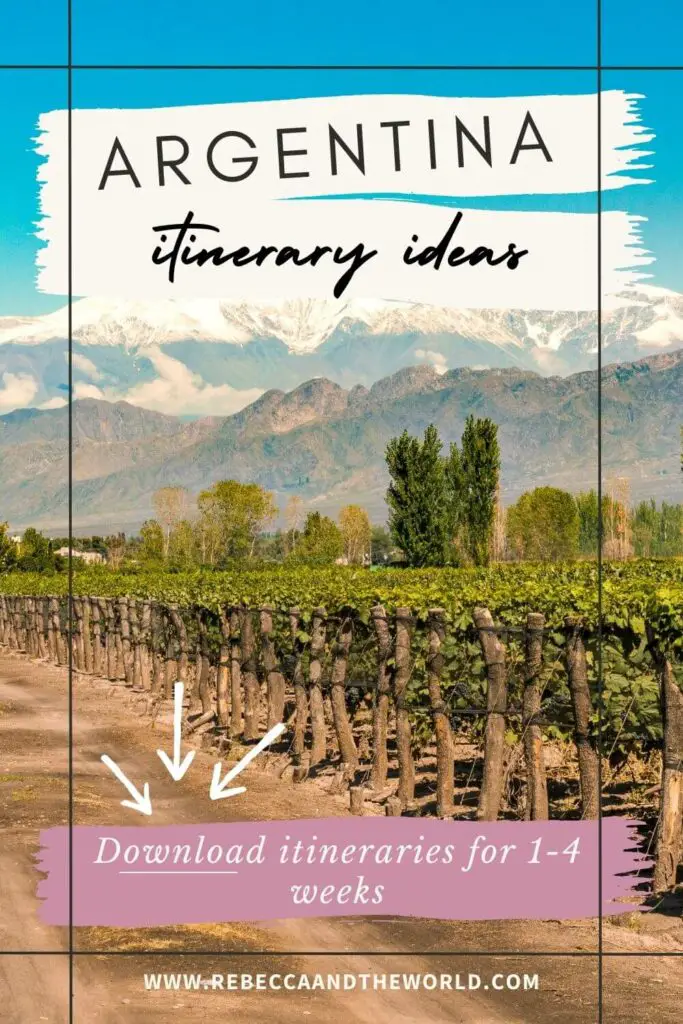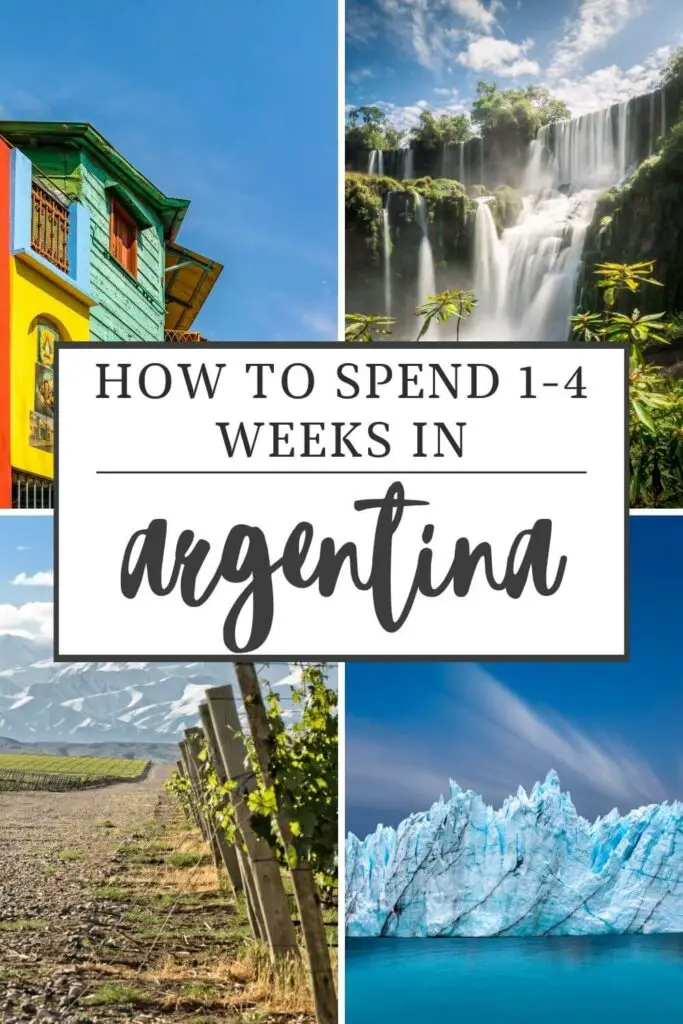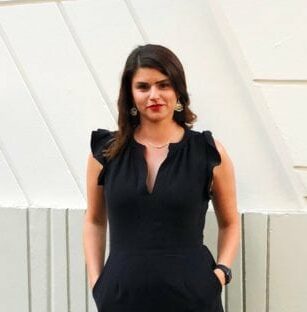Looking for Argentina itinerary ideas for how to spend 1-4 weeks in the country? I’m a former Argentina expat who’s spent a lot of time travelling around Argentina. Here are my suggestions for how to plan the perfect itinerary for Argentina.
Welcome to the land of tango, wine and some of the most breathtaking landscapes on our planet – yes, we’re talking about Argentina!
It’s vast (really vast, like the eighth largest country in the world kind of vast), so planning your trip can seem a bit daunting at first. But don’t worry, I’ve got you covered. Drawing from my two years of living and travelling extensively in this beautiful country, I’ve put together a range of itineraries to help you make the most of your time, be it one, two, three or even four weeks here.
From the buzzing cosmopolitan city of Buenos Aires to the stunning Iguazu Falls in the north to the majestic glaciers of Patagonia in the south, these itineraries are practical and achievable, and packed with the very best experiences Argentina has to offer.
This blog post may contain affiliate links, meaning if you book or buy something through one of these links, I may earn a small commission (at no extra cost to you).
Planning your Argentina travel itinerary
There are a few things you need to know about planning an Argentina itinerary – and what’s behind how I’ve designed these itineraries.
If you’re across the details, jump straight to the Argentina itineraries:
How much time do you need in Argentina?
Firstly, let’s address the elephant in the room – the sheer size of Argentina. As the eighth largest country in the world, Argentina is massive. The country stretches for about 3,650 kilometres from north to south and spans 1,400 kilometres at its widest point from east to west. Exploring all of Argentina’s diverse landscapes and vibrant cities requires some serious mileage and time.
So, depending on how much time you can get off work, you’re going to have to make some hard decisions about where to focus your itinerary.
I think you need a minimum of one week, which is where I’ve started these Argentina itinerary ideas.
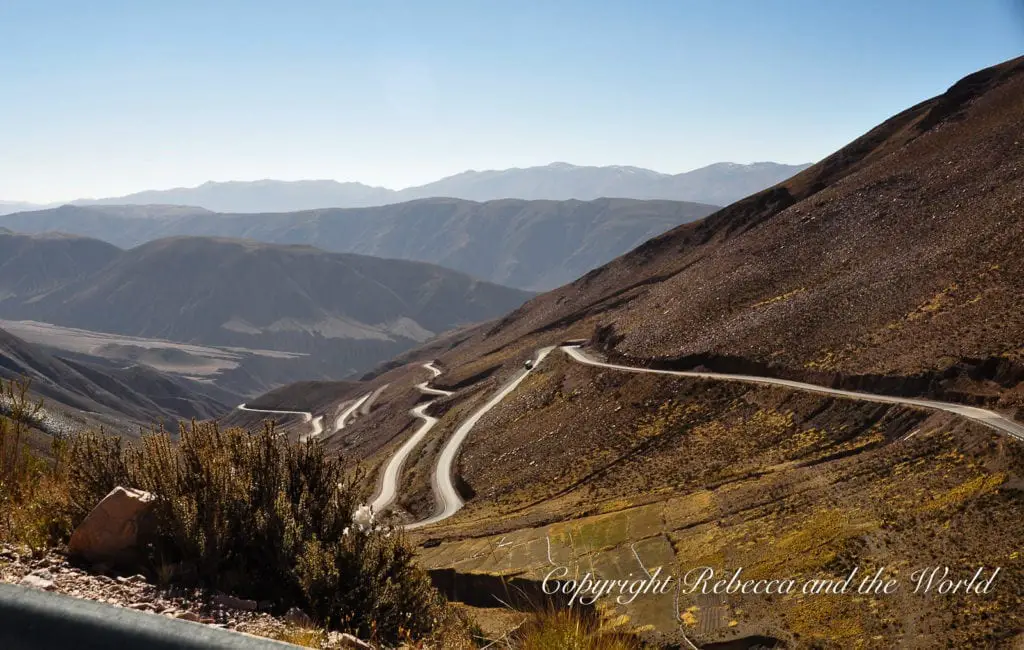
Where should you start your Argentina itinerary?
All of the itinerary ideas I’ve included start from Buenos Aires. I’ve done this because it’s the capital city with the most international connections.
If you’re coming from a neighbouring country and crossing the border by land or flying into another Argentina city, you’ll need to adjust these itineraries.
How to get around Argentina
These itineraries all include flying – it’s the easiest and quickest way to get around Argentina.
Some cities in Argentina aren’t connected directly by air, so you might need to go via Buenos Aires. I’ve tried to avoid this as much as possible with these itineraries. Consider buying carbon offsets! Check Skyscanner for routes and pricing.
With some of these itineraries, you might be renting a car in Argentina – hello road trip! Driving in Argentina is safe and a great way to see the country. But I’ve only done this for certain sections of itineraries because it would take too long to do it all by car. Check car rentals online with DiscoverCars.
If you’re on a budget, bus travel might be a better option. I haven’t considered long-haul bus travel in any of these itineraries, so you will need to adjust based on bus schedules.
Read more about getting around in my Argentina travel tips guide.
What do you want to see and do in Argentina?
These itineraries are just a guide. Adjust them based on what you want to do in Argentina. Do you want to get outdoors or are cities more your thing? Is trying local wines and Argentinian food a priority?
Pick your priorities and focus on these to get the best out of your time.
When is the best time to visit Argentina?
The best time to visit Argentina is spring, from September to November, when the weather is milder and crowds fewer. Autumn (March to May) is another great time to visit.
The peak tourist season in Argentina is during the summer months of December to February, but this also means higher prices and bigger crowds. Buenos Aires can be sweltering during these months, but it’s the best time to head south to Patagonia.
In the winter months (June to August), Patagonia pretty much shuts down, so you won’t be able to visit this region. But if skiing is on your cards, this is a great time to visit.
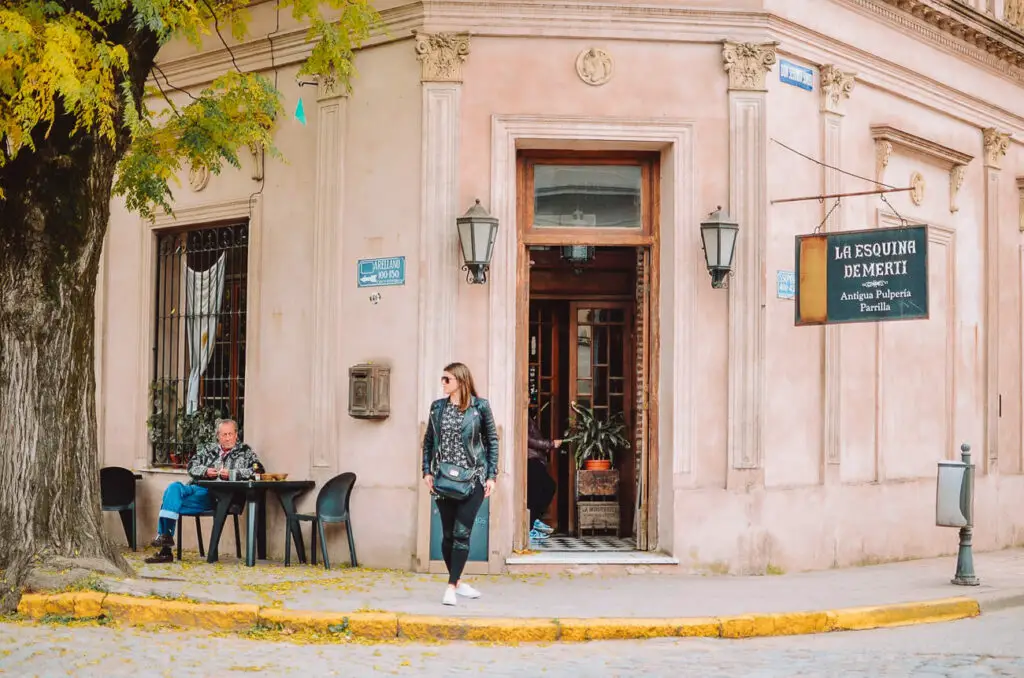
Argentina itineraries for 1 week to 1 month
Here are my suggestions for how to spend your time in Argentina. Click on the links below to jump straight to the itinerary of your choice.
For each itinerary, I list where to go each day and then, to avoid repeating myself for each section, I’ve included links to jump to the bottom of the article for details on what to do in each destination and where to stay.
Argentina map: Where to go in Argentina
This map of Argentina shows these itineraries – click on the layer that corresponds to the itinerary you want to see. (You’ll need to click the little arrow in the top left-hand corner to show the layers, and then click the boxes beside the itineraries to toggle them on and off.)
Argentina itinerary 7 days
A week in Argentina may seem like a whirlwind tour, but with strategic planning, it’s enough to scratch the surface of the country (and leave you wanting more). Given the vastness of Argentina and the limitations set by flight connections, your itinerary will mostly be confined to a few days in Buenos Aires before whisking yourself off to one more destination of your choice.
You need to be realistic about what you can see and do in a week, which is why I recommend a few days in Buenos Aires followed by a few days in another destination before you head back to Buenos Aires for your flight home. Here are several options for how you can spend a week in Argentina.
Once you’ve decided on your itinerary, jump to what to do in Argentina to plan out your days.
Option 1: Buenos Aires and Mendoza
Discover what makes Buenos Aires such a cool city before heading over to Argentina’s most famous wine region, Mendoza.
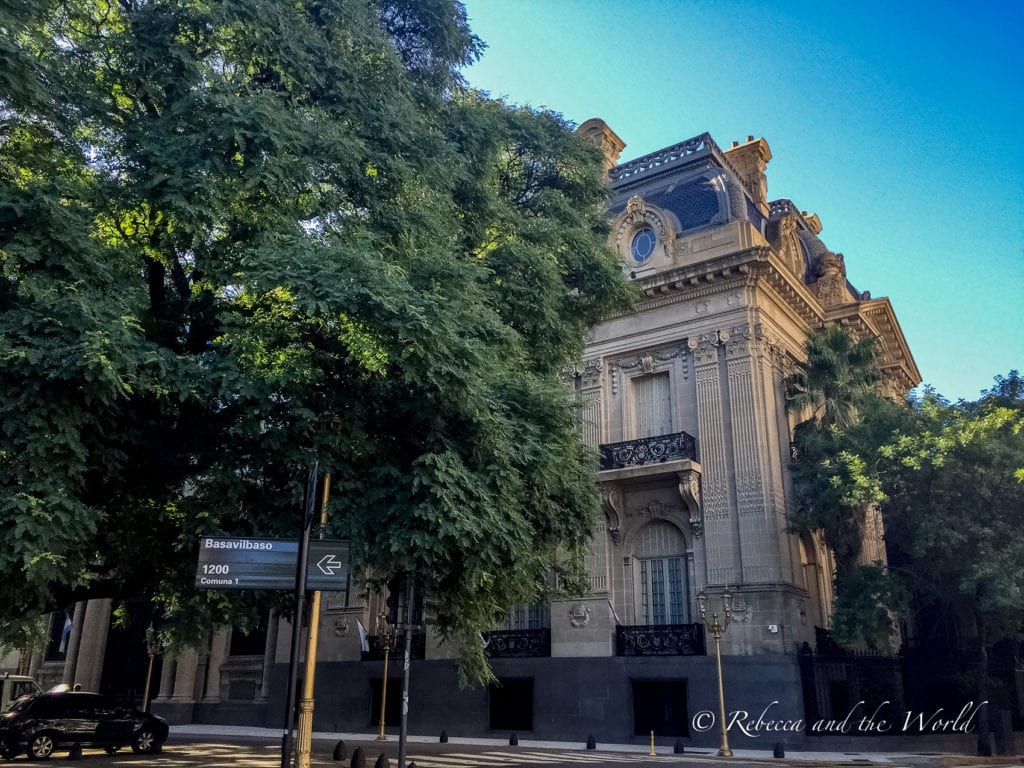
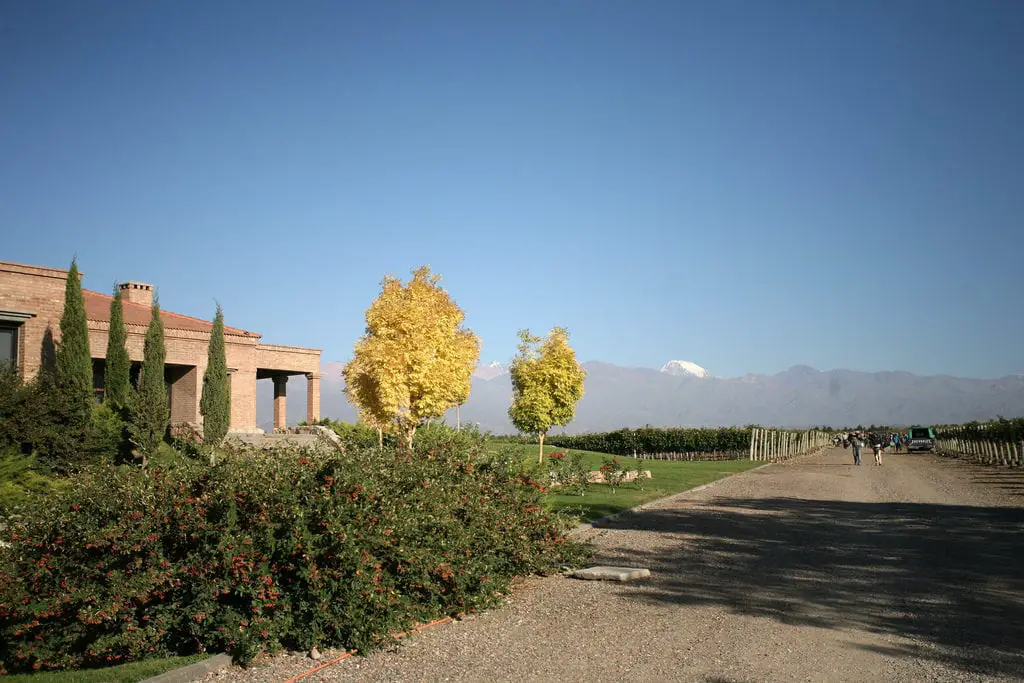
Days 1-3: Buenos Aires – overnight in Buenos Aires
Days 4-6: Mendoza – overnight in Mendoza
Day 7: Return to Buenos Aires / depart Argentina
Option 2: Buenos Aires and Bariloche
Combine big-city Buenos Aires with the beautiful outdoors of Bariloche in northern Patagonia.
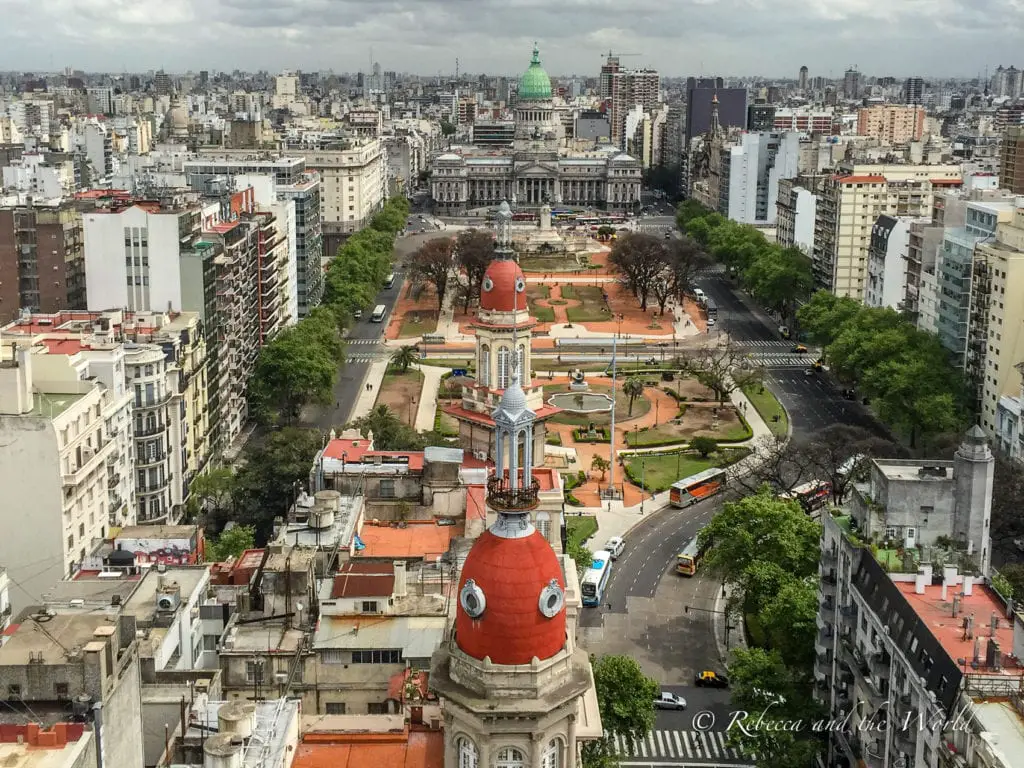
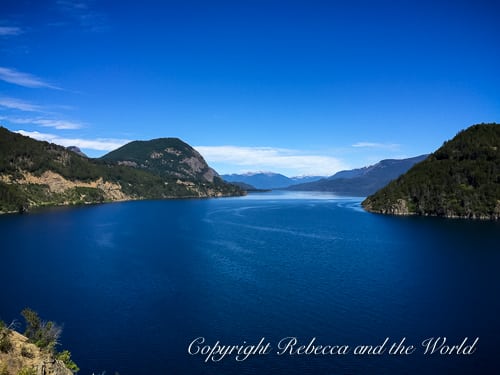
Days 1-3: Buenos Aires – overnight in Buenos Aires
Days 4-6: Bariloche – overnight in Bariloche
Day 7: Return to Buenos Aires / depart Argentina
Option 3: Buenos Aires and North Argentina
Spend a couple of days in Buenos Aires before heading to the north of Argentina – my favourite part of the country for stunning landscapes and wineries. You’ll need to cut your stay in Buenos Aires to two days to be able to fit in the highlights of the north.
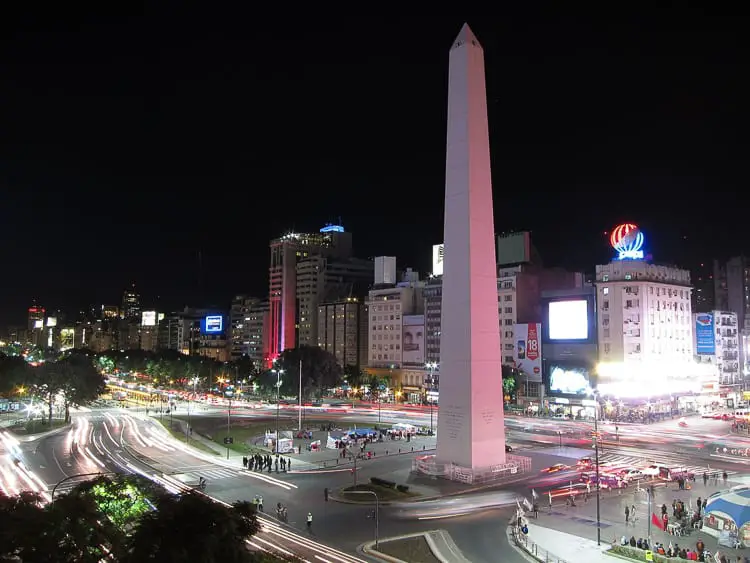
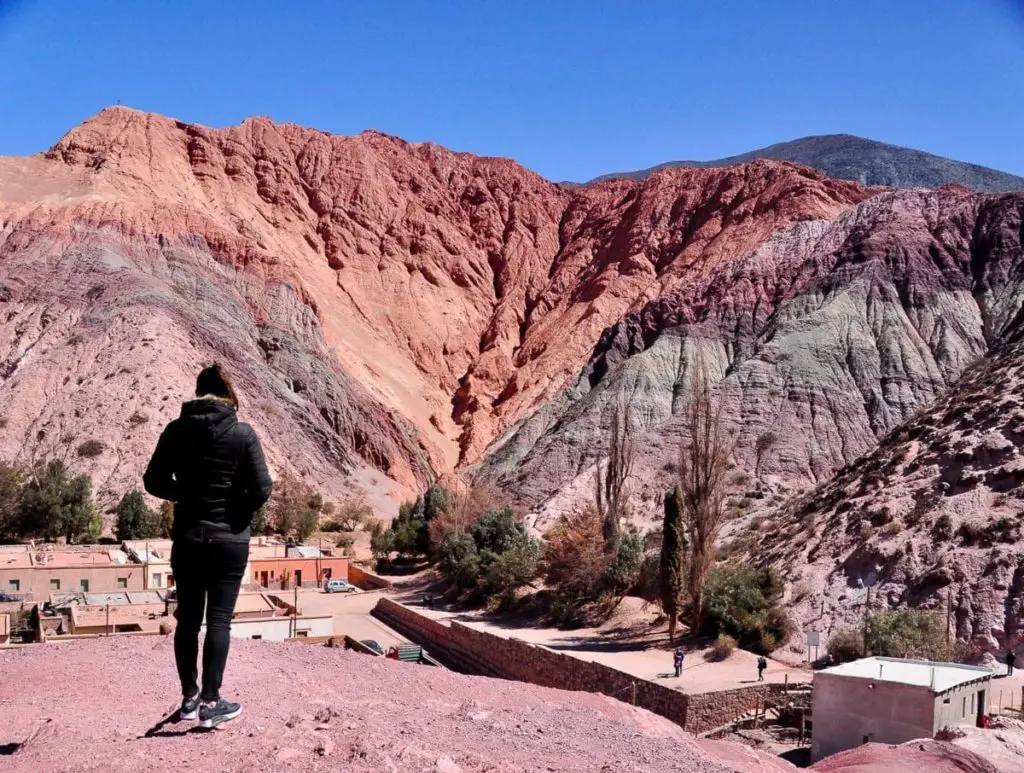
Days 1-2: Buenos Aires – overnight in Buenos Aires
Day 3: Salta – overnight in Salta
Days 4-5: Purmamarca, Tilcara and Humahuaca – overnight in Purmamarca
Day 6: Cafayate – overnight in Cafayate
Day 7: Return to Salta, fly back to Buenos Aires / depart Argentina
Option 4: Buenos Aires and Peninsula Valdes
After a few days in bustling Buenos Aires, Peninsula Valdes is your next destination for wildlife watching.
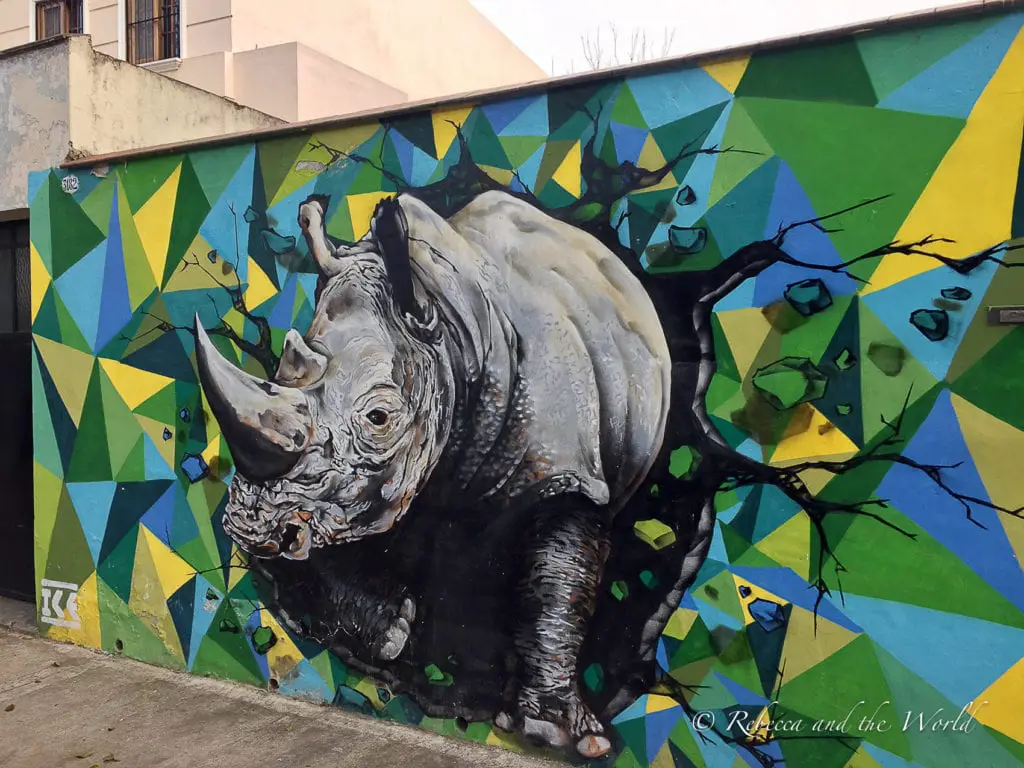
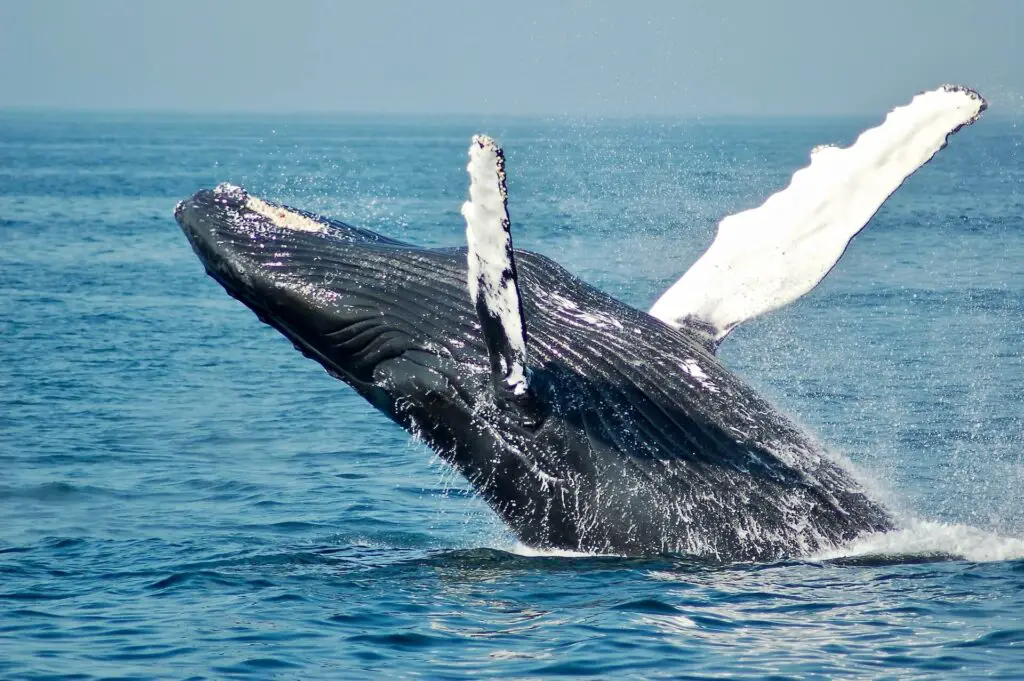
Days 1-3: Buenos Aires – overnight in Buenos Aires
Days 4-6: Peninsula Valdes – overnight in Puerto Madryn
Day 7: Return to Buenos Aires / depart Argentina
Option 5: Buenos Aires, El Calafate and El Chaltén
Spend a few days wandering Buenos Aires then head south for hiking in Patagonia – including trekking on a glacier!
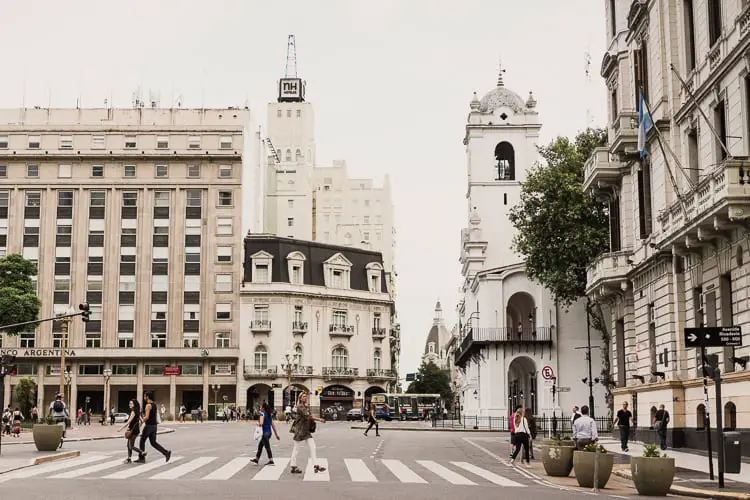
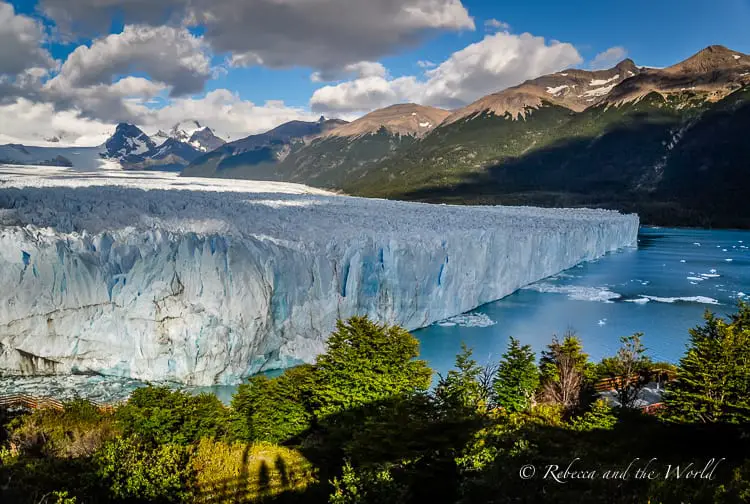
Days 1-2: Buenos Aires – overnight in Buenos Aires
Days 3-4: El Calafate and Perito Moreno Glacier – overnight in El Calafate
Days 5-6: Hiking and views in El Chaltén – overnight in El Chaltén
Day 7: Return to El Calafate, flight back to Buenos Aires / depart Argentina
2 weeks in Argentina
While you can see a few highlights in one week, I think 2 weeks in Argentina is the minimum time you should plan for a visit.
Here, I’ve got two different itinerary options – one explores the iconic Patagonian south of Argentina, while the other takes you to the beautiful north of the country.
I like to pack a lot in, so adjust these itineraries to suit your travel speed.
2 weeks in Argentina – Itinerary option 1
This itinerary explores cosmopolitan Buenos Aires before heading south for a taster of Patagonia’s highlights: Perito Moreno Glacier and hiking. Heading back north, you’ll then stop in either Mendoza for wine tasting or Bariloche for more outdoor experiences, before returning to Buenos Aires.
Buenos Aires – El Calafate – El Chaltén – Bariloche OR Mendoza – Buenos Aires
Once you’ve decided on your itinerary, jump to what to do in Argentina to plan out your days.
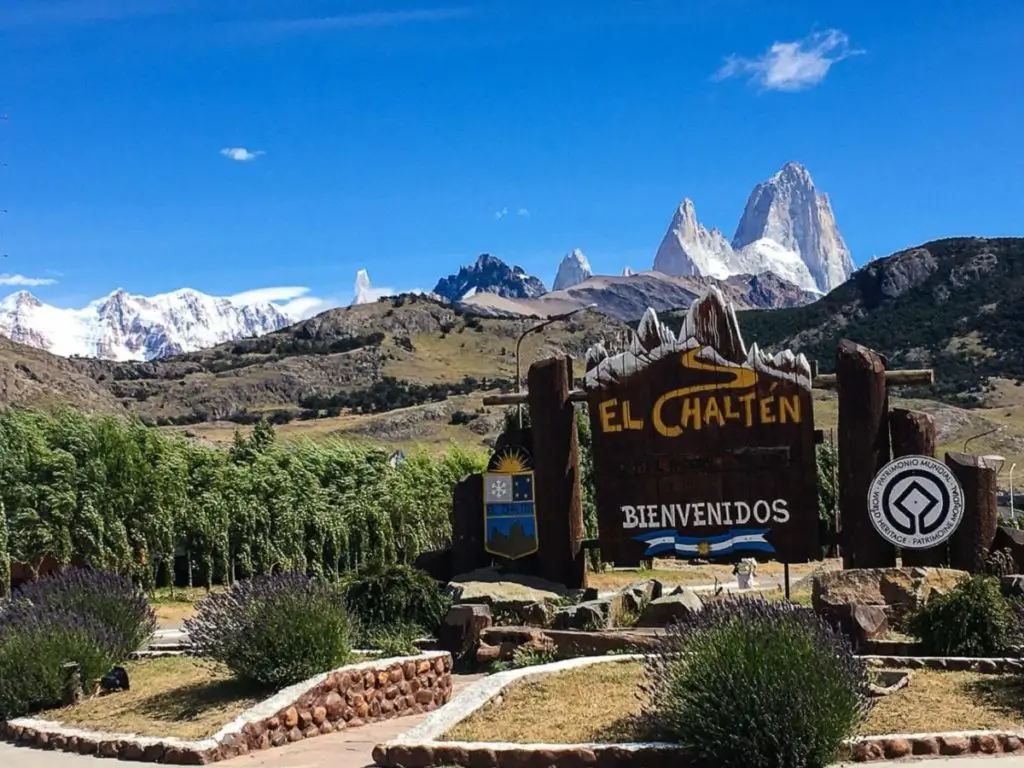
Days 1-3: Buenos Aires – overnight in Buenos Aires
Day 4: Fly to El Calafate – overnight in El Calafate
Day 5: Perito Moreno Glacier – overnight in El Calafate
Day 6: El Chaltén – overnight in El Chaltén
Take a private transfer or the 3.5-hour bus trip to El Chaltén, Argentina’s hiking capital.
If you’ve arrived in the morning, then hit the ground running in the afternoon by heading off on an easy hike. The Mirador Los Condors/Mirador Las Aguilas or Chorillo del Salto hikes are both easy hikes between 1-2 hours long.
Day 7: Hiking in El Chaltén – overnight in El Chaltén
Day 8: Hiking in El Chaltén – overnight in El Chaltén
Day 9: Travel to Mendoza or Bariloche – overnight in Mendoza or Bariloche
You’ve got two options for the next leg of your trip. You can either head to the wine region of Mendoza or escape to the beautiful outdoors of Bariloche.
To get to either region, you’ll need to head back to El Calafate to catch your flight. Unfortunately, there are no direct flights from El Calafate to Mendoza, so you’ll have a long day of travel as you’ll need to connect (most likely through Buenos Aires).
There are direct flights from El Calafate to Bariloche daily.
Days 10-12: Mendoza or Bariloche – overnight in Mendoza or Bariloche
Day 13: Return to Buenos Aires. Spend the day ticking off anything you weren’t able to do when you first arrived in the city – overnight in Buenos Aires
Day 14: Fly home, sadly your 2 weeks in Argentina are up!
Argentina 2 week itinerary – Option 2
This itinerary starts in Buenos Aires, where you’ll explore what makes this city so cool. Heading north, you’ll visit jaw-dropping Iguazu Falls before heading to the desert for stunning landscapes. The visit to the north includes a few days exploring wineries in Cafayate, Argentina’s “other” wine region, before returning to Buenos Aires.
Buenos Aires – Iguazu Falls – Salta – Purmamarca (and nearby Tilcara, Humahuaca and Salinas Grandes) – Cafayate – Buenos Aires
Once you’ve decided on your itinerary, jump to what to do in Argentina to plan out your days.
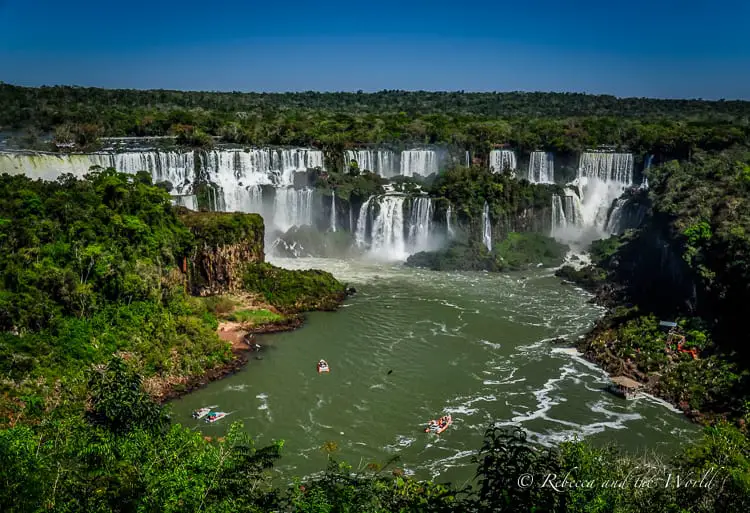
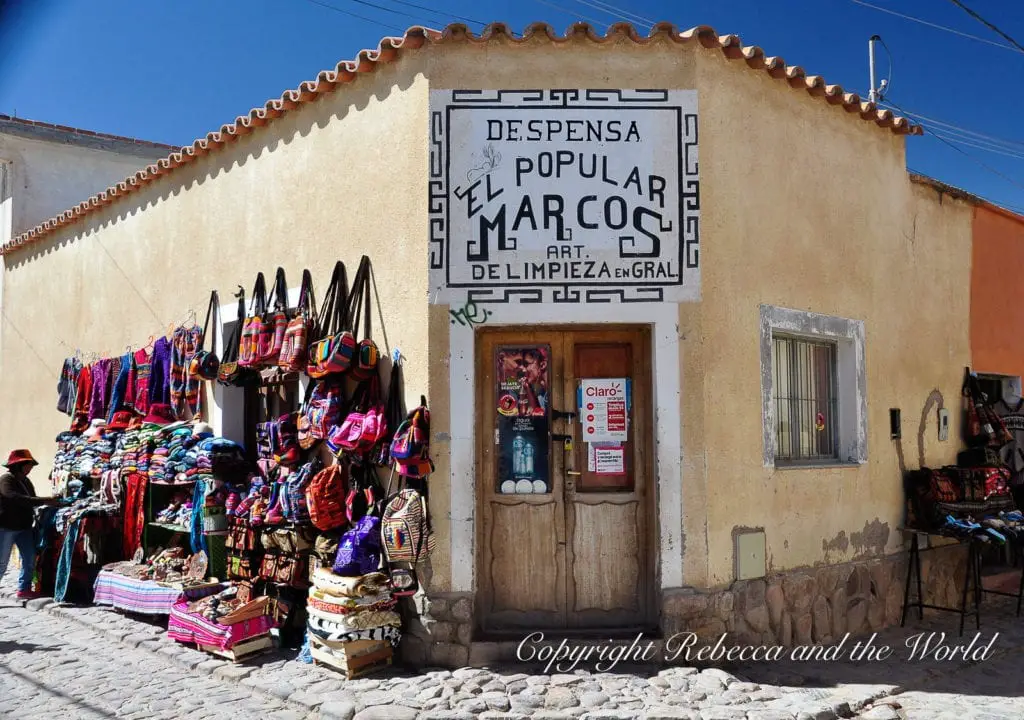
Days 1-3: Buenos Aires – overnight in Buenos Aires
Day 4: Fly to Iguazu Falls – overnight in Puerto Iguazu
Head to the airport for your flight to Puerto Iguazu. Check in to your hotel and, depending on what time you’ve arrived, head out for your first glimpse of the falls.
Days 5-6: Explore the incredible Iguazu Falls – both the Argentine and Brazillian sides if you can – overnight in Puerto Iguazu
Day 7: Fly to Salta – overnight in Salta
From the lush tropical rainforest, you’re now off to the desert. Catch a flight to Salta. Direct flights from Puerto Iguazu depart on Tuesday, Wednesday, Thursday and Sunday, so try to plan your trip around these days if you can. If not, you’ll probably have a long day of travel and have to transit through Buenos Aires.
Day 8: Salta – overnight in Salta
Days 9-10: Purmamarca, Humahuaca, Tilcara and Salinas Grandes – overnight in Purmamarca
Days 11-12: Cafayate – overnight in Cafayate
Day 13: Return to Salta and fly back to Buenos Aires – overnight in Buenos Aires
Today, head back to Salta. It’s a 3-hour drive, so plan your schedule so you can return your rental car and get a flight back to Buenos Aires.
Head out for your final night in Buenos Aires.
Day 14: Fly home
Today’s your final day in Argentina, so tick off anything you didn’t get done when you were in Buenos Aires earlier.
3 weeks in Argentina
With three weeks in Argentina, you can venture both north and south of the country. Here’s my recommendation for a 3-week trip.
Buenos Aires – El Calafate – El Chaltén – Mendoza OR Bariloche – Salta – Purmamarca (and nearby Tilcara, Humahuaca and Salinas Grandes) – Cafayate – Salta – Buenos Aires
Once you’ve decided on your itinerary, jump to what to do in Argentina to plan out your days.
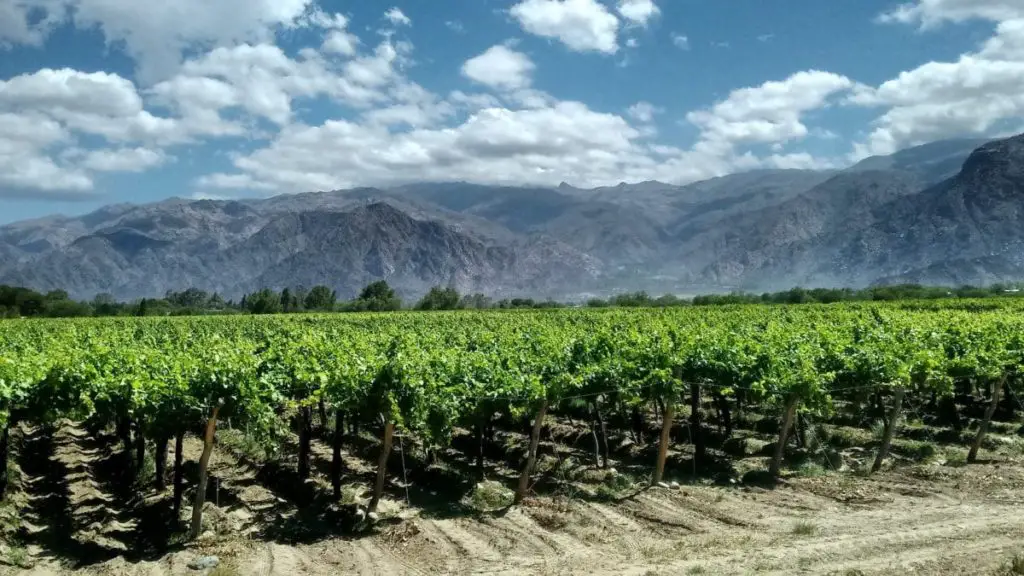
Days 1-3: Buenos Aires – overnight in Buenos Aires
Day 4: Fly to El Calafate – overnight in El Calafate
Day 5: Perito Moreno Glacier – overnight in El Calafate
Day 6: El Chaltén – overnight in El Chaltén
Take a private transfer or the 3.5-hour bus trip to El Chaltén, Argentina’s hiking capital.
If you’ve arrived in the morning, then hit the ground running in the afternoon by heading off on an easy hike. The Mirador Los Condors/Mirador Las Aguilas or Chorillo del Salto hikes are both easy hikes between 1-2 hours long.
Days 7-8: Hiking in El Chaltén – overnight in El Chaltén
Day 9: Fly to Mendoza or Bariloche – overnight in Mendoza or Bariloche
For the next part of the trip, you’ve got two options: head to Mendoza for wine country or Bariloche for beautiful outdoors.
To get to either region, you’ll need to head back to El Calafate to catch your flight. There are direct flights from El Calafate to Bariloche daily.
Unfortunately, there are no direct flights from El Calafate to Mendoza, so you’ll have a long day of travel as you’ll need to connect (most likely through Buenos Aires).
Days 10-11: Mendoza or Bariloche – overnight in Mendoza or Bariloche
Day 12: Fly to Salta – overnight in Salta
From Mendoza to Salta, there are direct flights on Monday, Tuesday, Thursday and Saturday.
From Bariloche to Salta, you’ll have to transit via Buenos Aires, Mendoza or Cordoba.
Day 13: Salta – overnight in Salta
Days 14-15: Purmamarca, Humahuaca, Tilcara and Salinas Grandes – overnight in Purmamarca
Rent a car to explore this beautiful area north of Salta.
Days 16-17: Cafayate – overnight in Cafayate
Day 18: Return to Salta, flight to Puerto Iguazu – overnight in Puerto Iguazu
Head back to Salta with time to return your rental car and get on a flight to Puerto Iguazu. There are direct flights on Monday, Tuesday, Thursday and Saturday. If you can’t get a direct flight, you will need to go via Buenos Aires, which will make it a long day of travelling.
Day 19: Iguazu Falls – overnight in Puerto Iguazu
Day 20: Iguazu Falls, return to BA – overnight in Buenos Aires
Depending on what time your flight to Buenos Aires is, try to sneak in another visit to Iguazu Falls to gaze in awe.
When you arrive back in Buenos Aires, check in to your hotel and hit the town for your final night in the country.
Day 21: Buenos Aires and home
If you have a later flight, head out for one final exploration of Buenos Aires. Don’t worry – I know you’ll be back!
4 weeks in Argentina itinerary
Now we’re talking! With a month in Argentina, you can see a lot of the country. Here’s a suggested 4-week Argentina itinerary. Once again, I have packed this itinerary, so you can slow it right down and just hit a few highlights if that’s more your travel style.
Buenos Aires – Tigre – Colonia del Sacramento (Uruguay) – Peninsula Valdes – Ushuaia – El Calafate – El Chaltén – Bariloche OR Mendoza – Salta – Purmamarca (and nearby Tilcara, Humahuaca and Salinas Grandes) – Cafayate – Iguazu Falls – Buenos Aires
Once you’ve decided on your itinerary, jump to what to do in Argentina to plan out your days.
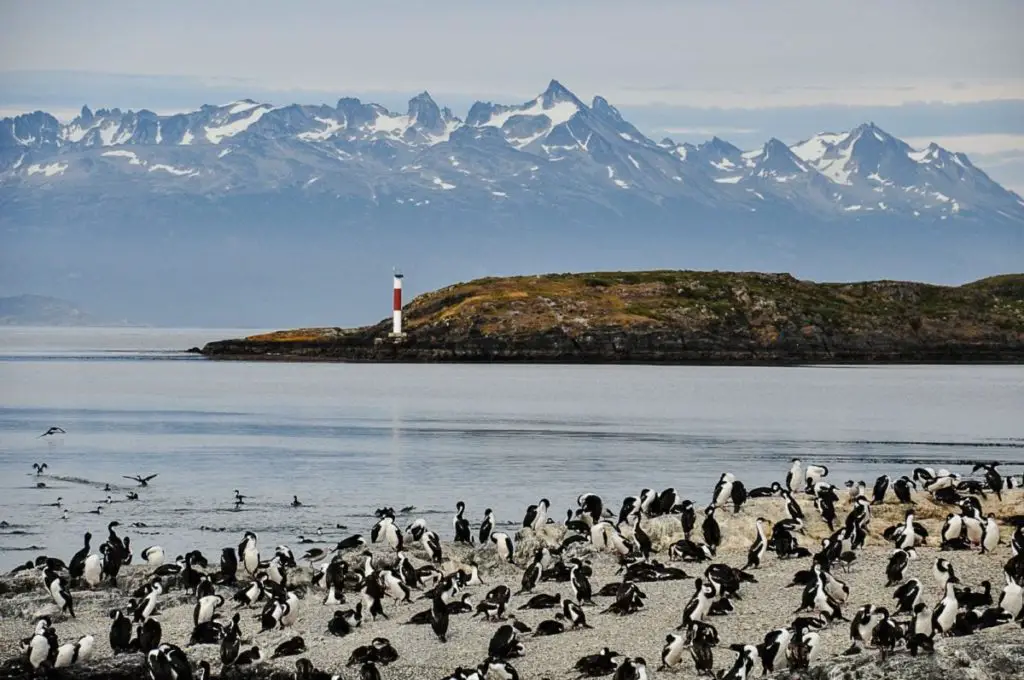
Days 1-3: Buenos Aires – overnight in Buenos Aires
Day 4: Day trip to Tigre – overnight in Buenos Aires
Day 5: Day trip to Colonia del Sacramento – overnight in Buenos Aires
Day 6: Fly to Peninsula Valdes – overnight in Puerto Madryn
To get to Peninsula Valdes – where you’ll find sea lions, Magellanic penguins, elephant seals, plenty of birdlife and, depending on the season, whales – you can fly into Puerto Madryn or Trelew airports. Check both to see which has the best price/schedule.
Days 7-8: Peninsula Valdes – overnight in Puerto Madryn
Day 9: Fly to Ushuaia – overnight in Ushuaia
Head deeper into Patagonia. Ushuaia is the “end of the world” and the gateway to Antarctica.
You’ll need to depart from Trelew Airport. There are direct flights to Ushuaia on Tuesday, Thursday and Saturday.
Days 10-11: Ushuaia – overnight in Ushuaia
Day 12: Fly to El Calafate – overnight in El Calafate
Day 13: Perito Moreno Glacier – overnight in El Calafate
Day 14: Travel to El Chaltén – overnight in El Chaltén
Take a private transfer or the 3.5-hour bus trip to El Chaltén, Argentina’s hiking capital.
If you’ve arrived in the morning, then hit the ground running in the afternoon by heading off on an easy hike. The Mirador Los Condors/Mirador Las Aguilas or Chorillo del Salto hikes are both easy hikes between 1-2 hours long.
Days 15-16: El Chaltén – overnight in El Chaltén
Day 16: Fly to Mendoza or Bariloche – overnight in Mendoza or Bariloche
For the next part of the trip, you’ve got two options: head to Mendoza for wine country or Bariloche for beautiful outdoors.
To get to either region, you’ll need to head back to El Calafate to catch your flight. There are direct flights from El Calafate to Bariloche daily.
Unfortunately, there are no direct flights from El Calafate to Mendoza, so you’ll have a long day of travel as you’ll need to connect (most likely through Buenos Aires).
Days 17-19: Bariloche or Mendoza – overnight in Bariloche or Mendoza
Day 20: Fly to Salta – overnight in Salta
From Mendoza to Salta, there are direct flights on Monday, Tuesday, Thursday and Saturday.
From Bariloche to Salta, you’ll have to transit via Buenos Aires, Mendoza or Cordoba.
Day 21: Salta – overnight in Salta
Days 22-23: Purmamarca, Humahuaca, Tilcara and Salinas Grandes – overnight in Purmamarca
Rent a car to explore this beautiful area north of Salta.
Days 24-25: Cafayate – overnight in Cafayate
Day 26: Return to Salta, flight to Puerto Iguazu – overnight in Puerto Iguazu
Head back to Salta with time to return your rental car and get on a flight to Puerto Iguazu. There are direct flights on Monday, Tuesday, Thursday and Saturday. If you can’t get a direct flight, you will need to go via Buenos Aires, which will make it a long day of travelling.
Days 27-28: Iguazu Falls – overnight in Puerto Iguazu
Day 29: Iguazu Falls, return to BA – overnight in Buenos Aires
Depending on what time your flight to Buenos Aires is, try to sneak in another visit to Iguazu Falls.
When you arrive back in Buenos Aires, check in to your hotel and hit the town for your final night in the country.
Day 30: Fly home
Sadly, it’s time to leave Argentina. You’ve fit quite a bit in with a month in the country! But I’m sure there are still things on your list that you’ll be back to tick off.
What to do in Argentina
So, now you’ve got an idea of how to plan your itinerary, what will you do when you’re in Argentina? This section outlines everything to do in the cities and destinations I’ve recommended in the itineraries above, with day-by-day suggestions. Get more inspiration from my guide to the 50 best things to do in Argentina.
Click through to the destinations that have made the cut for your itinerary:
- Buenos Aires
- Tigre
- Colonia del Sacramento
- Mendoza
- Bariloche
- Salta
- Purmamarca, Humahuaca, Tilcara
- Cafayate
- Iguazu Falls
- Peninsula Valdes
- El Calafate
- El Chalten
- Ushuaia
What to do in Buenos Aires
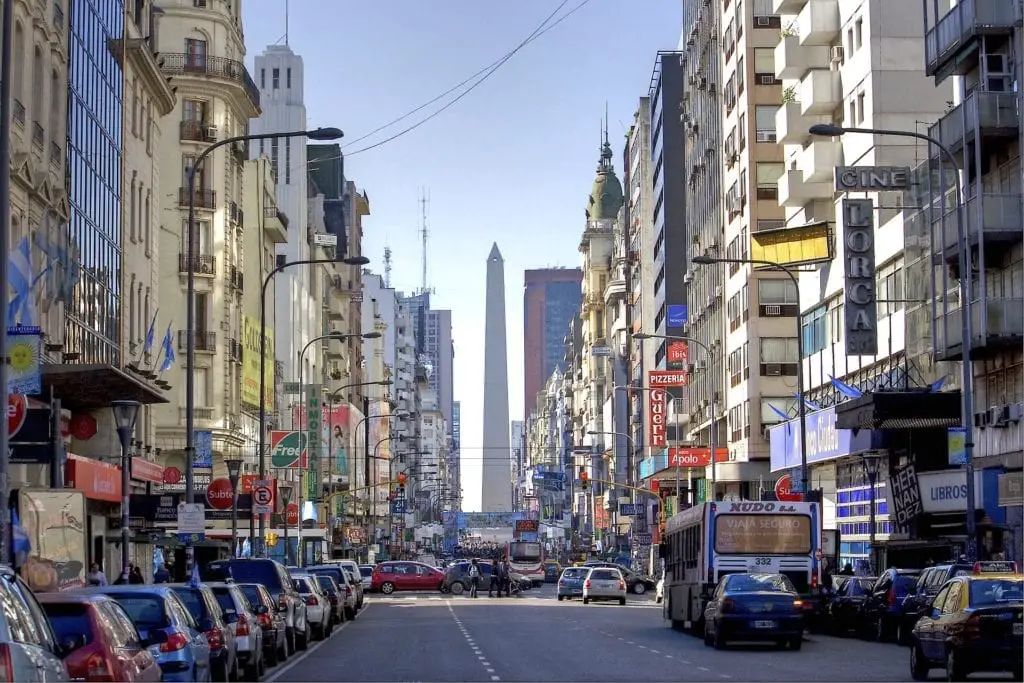
Buenos Aires was my home for two years and it’s an unforgettable city. A great mix of South American passion and culture and European architecture, you can easily fill three days in Buenos Aires.
On day 1, begin your Buenos Aires adventure in the city’s heart with a cortado at Café Tortoni. Explore the historic Plaza de Mayo, surrounded by the iconic Casa Rosada, Catedral Metropolitana and Cabildo. If visiting on a weekend, consider a guided tour of Casa Rosada.
Head south to the bohemian San Telmo neighbourhood, known for its antique shops and the bustling San Telmo market – best visited on Sunday for a fun atmosphere. Don’t miss El Zanjón de Granados, a network of tunnels beneath the streets.
Later, hop on a bus to La Boca to wander through El Caminito, the colourful streets that always appear in tourist photos. In the evening, learn about Argentine food culture with The Argentine Experience, and end the night at one of the city’s many cocktail bars.
On day 2, head to the elegant Recoleta neighbourhood (my old home!). Join a free walking tour with Free Walks Buenos Aires. Visit the opulent Teatro Colón and end your tour at the famous Recoleta Cemetery, home to Evita’s tomb. Marvel at the architecture of El Ateneo Grand Splendid, a bookstore housed in a former theatre. In the evening, catch a tango show at Bar Sur in San Telmo.
On day 3, spend your morning shopping in Palermo or admiring art at Museo de Arte Latinoamericano de Buenos Aires. Alternatively, relax in the parks of Palermo or visit the serene Jardín Japonés. Later, explore Buenos Aires’ street art with Graffiti Mundo. End your trip with a memorable dinner at Don Julio, one of the city’s most famous steakhouses. (I have more places to eat in Buenos Aires!)
Where to stay in Buenos Aires
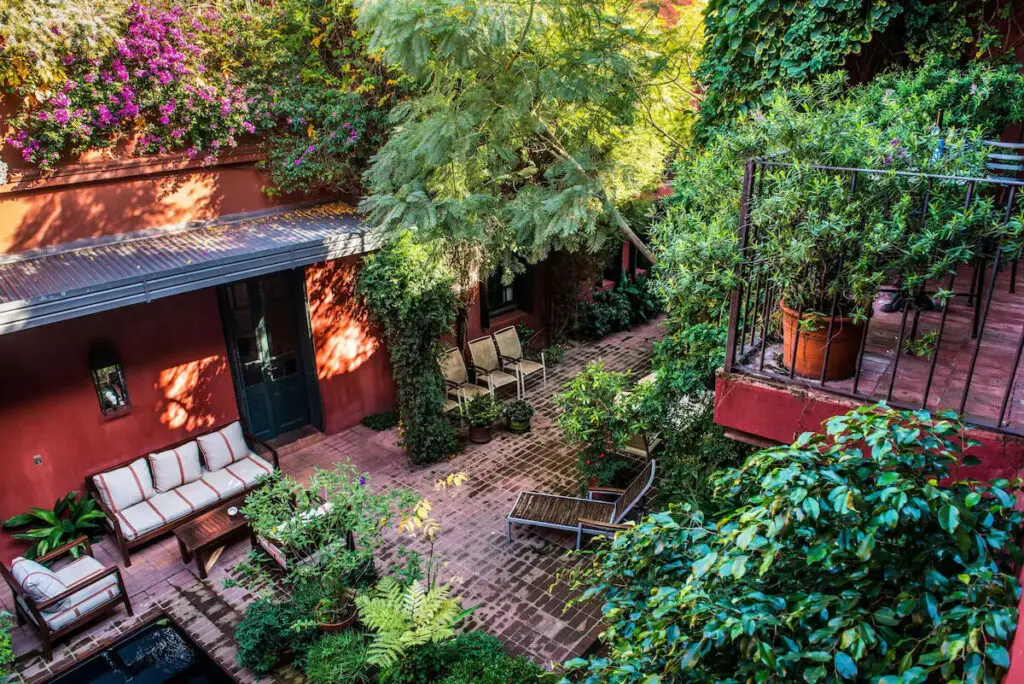
Luxury: (⭐ 9.0) BE Jardin Escondido by Coppola was once Francis Ford Coppola’s house and is now a cozy boutique hotel in the trendy Palermo neighbourhood.
Mid-range: (⭐ 8.7) The rooms at Hotel Club Frances, in the heart of Recoleta, are spacious and some have a sauna and spa bath.
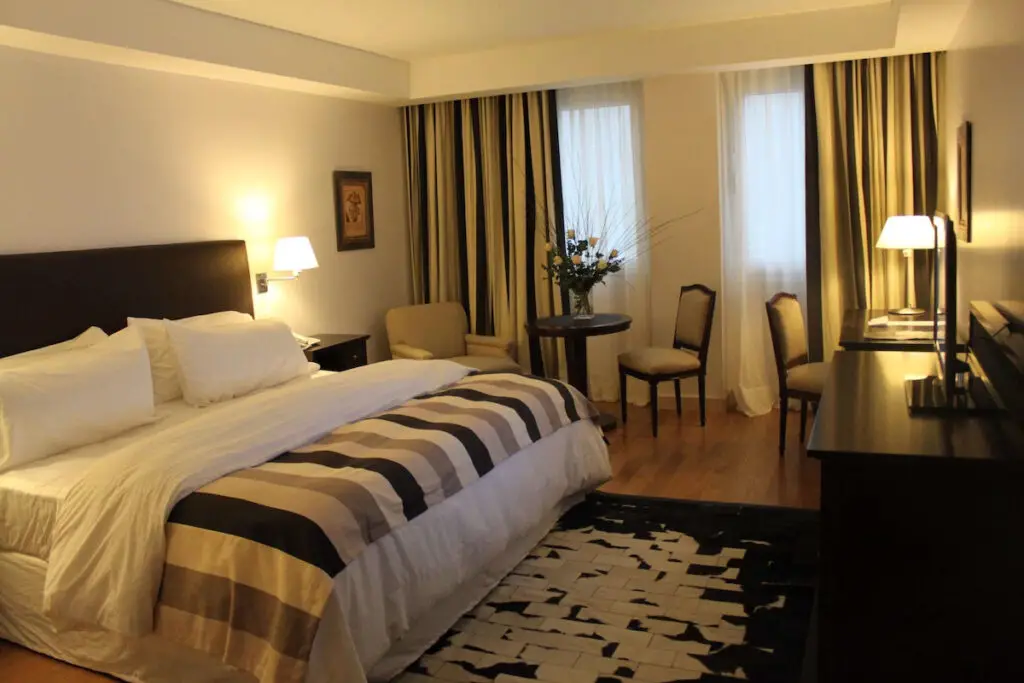
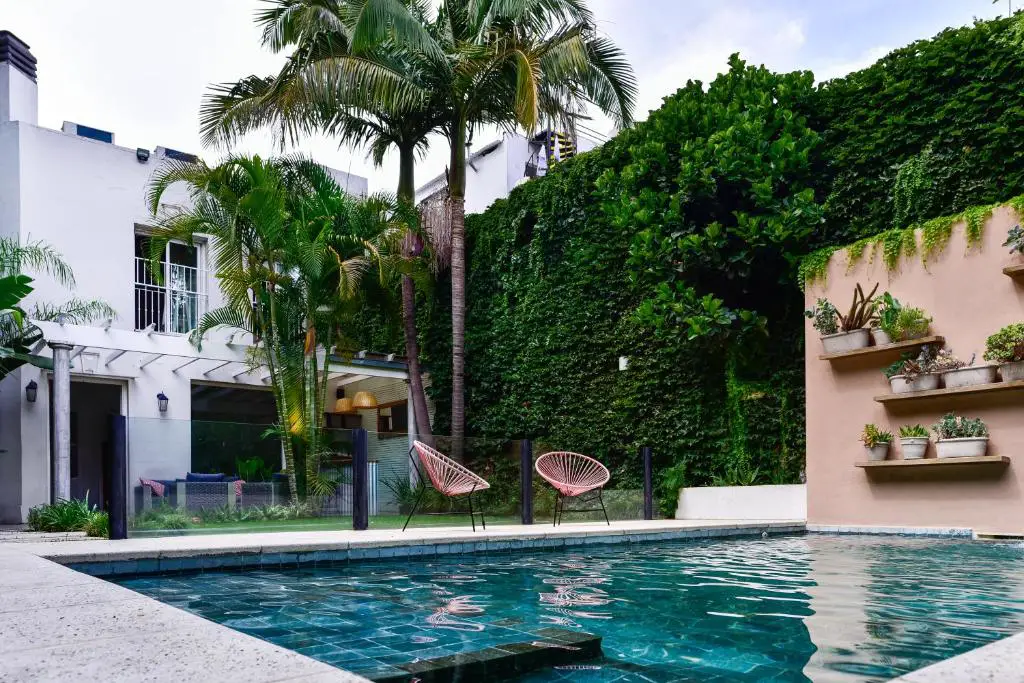
Budget: (⭐ 9.7) Casa Caravan has to be one of the cooler hostels I’ve seen, with a gorgeous garden, swimming pool, bar, clean rooms and comfy beds.
What to do on a day trip to Tigre
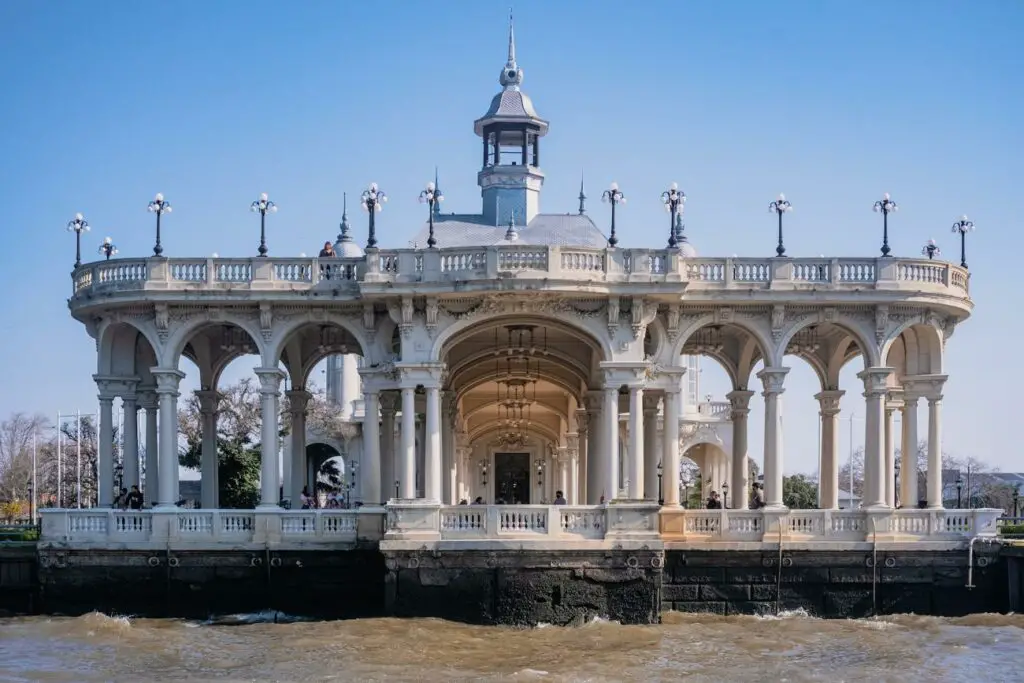
Just a short train ride from Buenos Aires, Tigre (and the surrounding Paraná Delta) is the perfect place to chill out for a day. It’s an unexpected destination so close to a major city – a network of islands and canals that can be explored by boat. Spend your day cruising along the waterways, checking out the houses on stilts and belle époque mansions.
Don’t miss the Puerto de Frutos market where you can buy everything from homemade jams to artisan crafts. For art enthusiasts, the Museo de Arte Tigre showcases beautiful Argentine art in an equally stunning building. Those interested in history can explore the Museo Naval de la Nación, which explores Argentina’s maritime past. There are several riverside restaurants or cafes where you can eat a meal before heading back to Buenos Aires in the evening.
If you don’t want to visit Tigre alone, consider one of these tours:
- Tour the Tigre River Delta and San Isidro, including a cruise around the canals, the fruit market and the cathedral. Includes hotel pick-up and drop-off, guide and snacks. Book the Tigre and San Isidro tour here.
- This half-day tour includes a cruise on the Rio de la Plata to Tigre with a guide. You’ll visit the riverside market and Tigre’s historical centre. Book the small-group tour to Tigre online here.
What to do on a day trip to Colonia del Sacramento
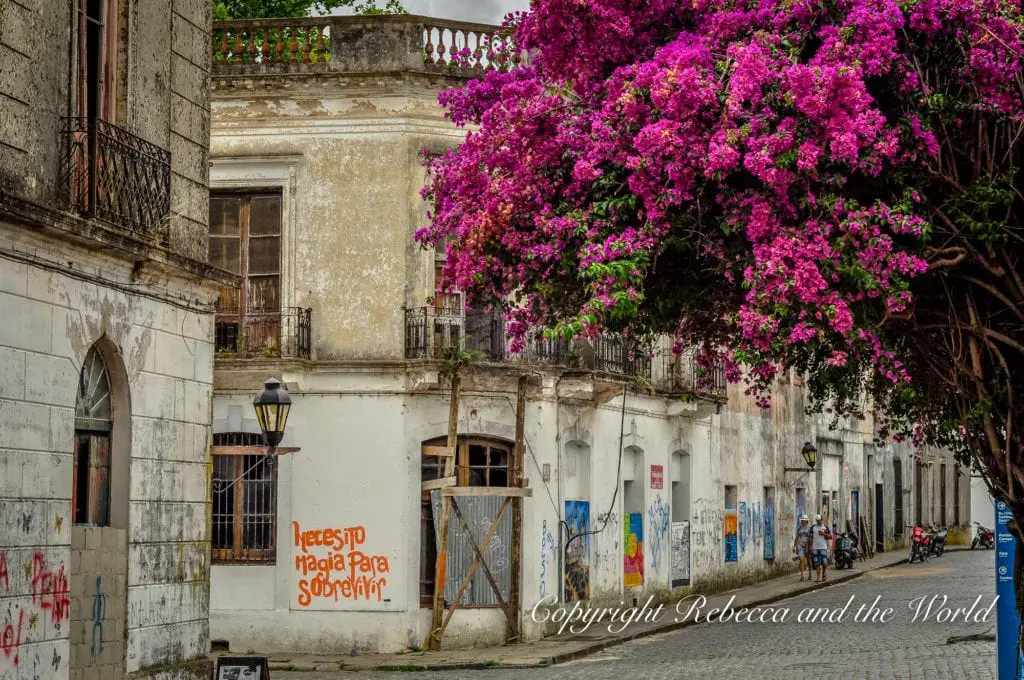
With an extra day in Buenos Aires, it’s easy to leap the Rio de la Plata into Uruguay to visit the town of Colonia del Sacramento.
Only a short ferry ride from Buenos Aires, this compact, historic town is a UNESCO World Heritage site with cobblestone streets, rustic old buildings and great restaurants. Begin your day trip at the Barrio Histórico, where you’ll find most of the town’s attractions. Visit the lighthouse, El Faro, for a panoramic view of the town and the river beyond.
Stop by the Plaza de Armas, where you can visit the Basilica del Santisimo Sacramento, an iconic structure that has stood the test of time since the 17th century. The Calle de los Suspiros (Street of Sighs) is filled with lovely buildings (and a supposed tragic past). There are also several museums.
Round off your day with a waterfront sunset at the old city wall before you hop on the ferry back to Buenos Aires.
If the thought of trying to navigate the ferry from Buenos Aires to Uruguay seems to hard, these tours can arrange everything for you:
- This private full-day tour includes hotel pick-up and drop-off, ferry tickets and a driver/guide in Colonia del Sacramento. Book this tour now.
- This tour arranges ferry tickets for you, with the option of a tour in Colonia del Sacramento. Book this tour now.
Don’t forget your passport!
What to do in Mendoza
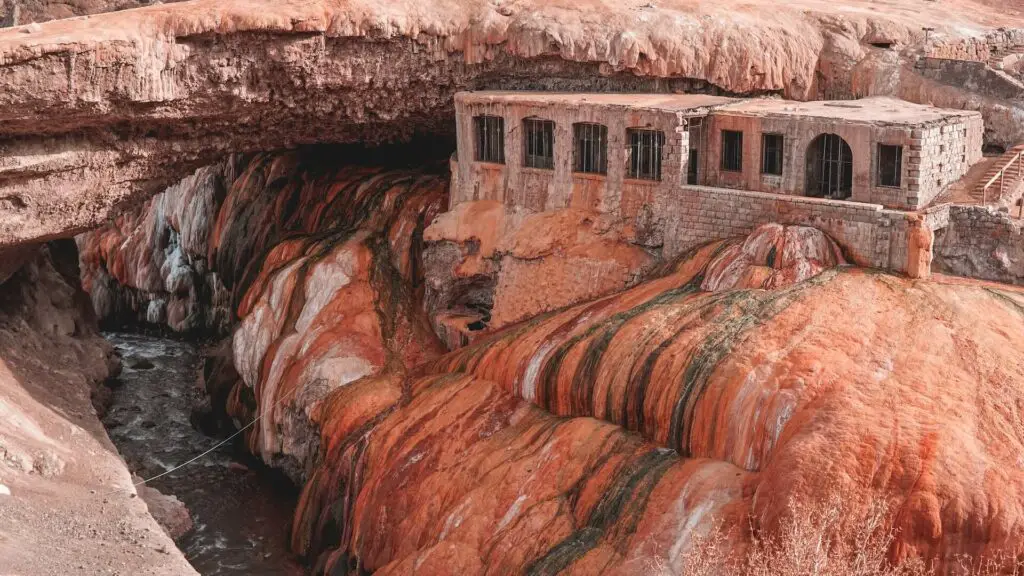
Head to Mendoza to try Argentina’s famous Malbec wine in vineyards set among the mountains.
Mendoza has three wine regions: Maipu, Lujan de Cuyo and the Uco Valley. Explore them by bike, on horseback or via a guided tour.
Maipu is known for its traditional wine-making methods with several family-run wineries. Lujan de Cuyo is often referred to as the birthplace of Malbec. The Uco Valley has panoramic views and high-altitude vineyards.
Spend two days exploring the different regions. It can be hard to choose among the hundreds of vineyards around Mendoza, so leave it in the hands of a guide who can direct you to the best ones. Here are some recommended tours to consider:
- Full-day private wine tour with 3-course lunch. Book online here.
- Explore the wineries of the Uco Valley at your own pace on this private tour. Book online here.
- This small-group tour of the Maipu Valley include a 3-course lunch. Book the tour here.
Want to be a bit more adventurous? I really enjoyed our winery bike tour with Martin’s Bikes.
Then dedicate the third day of your Mendoza adventure to rejuvenation and relaxation. Visit the Cacheuta Thermal Springs in the Andes mountains. These hot springs are a serene retreat, with therapeutic thermal waters, spa services and beautiful mountain views. Make sure you book the spa, not the water park. This tour arranges entry to the hot springs with transport from Mendoza.
Nearby is the Incan Bridge, a natural arch that has formed over the Las Cuevas River. Take a hike to see it and enjoy the stunning views of the Andes. Around this region, there’s also horseback riding, whitewater rafting and hiking.
You can rent a car to get around the region, or book one of these recommended tours:
- This small-group day trip explores the Andes Mountains and Aconcagua National Park from Mendoza. An asado lunch (with wine!) is included. Book online here.
- Discover the natural beauty of the Andes Mountains on this full-day tour from Mendoza which visits the Potrerillos Dam and the Puente del Inca. Book the tour here.
Where to stay in Mendoza
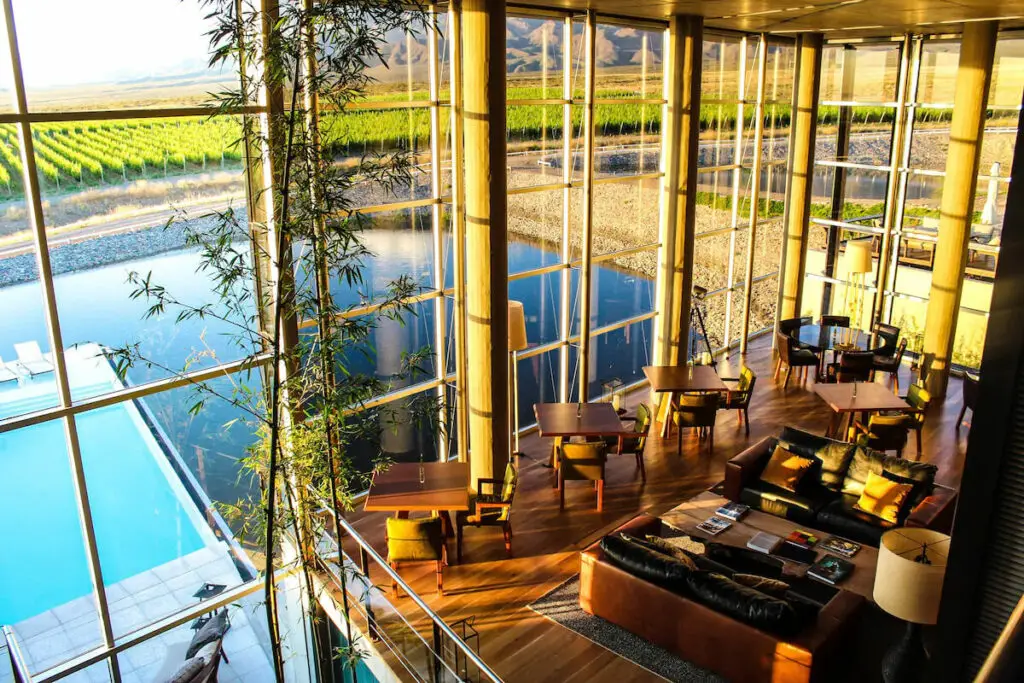
Casa de Uco Vineyard & Wine Resort is seemingly an extension of the stunning landscape that surrounds the hotel. Neutral colours, natural wood, thick columns and huge glass ceilings are designed to blend into the nearby mountains and vineyards.
Imagine waking up, stepping out onto your private terrace and finding yourself surrounded by views of the snowcapped Andes and Malbec vineyards. Entre Cielos makes that vision come true. The onsite spa and hammam offers grape-based treatments to soothe and revitalise guests.
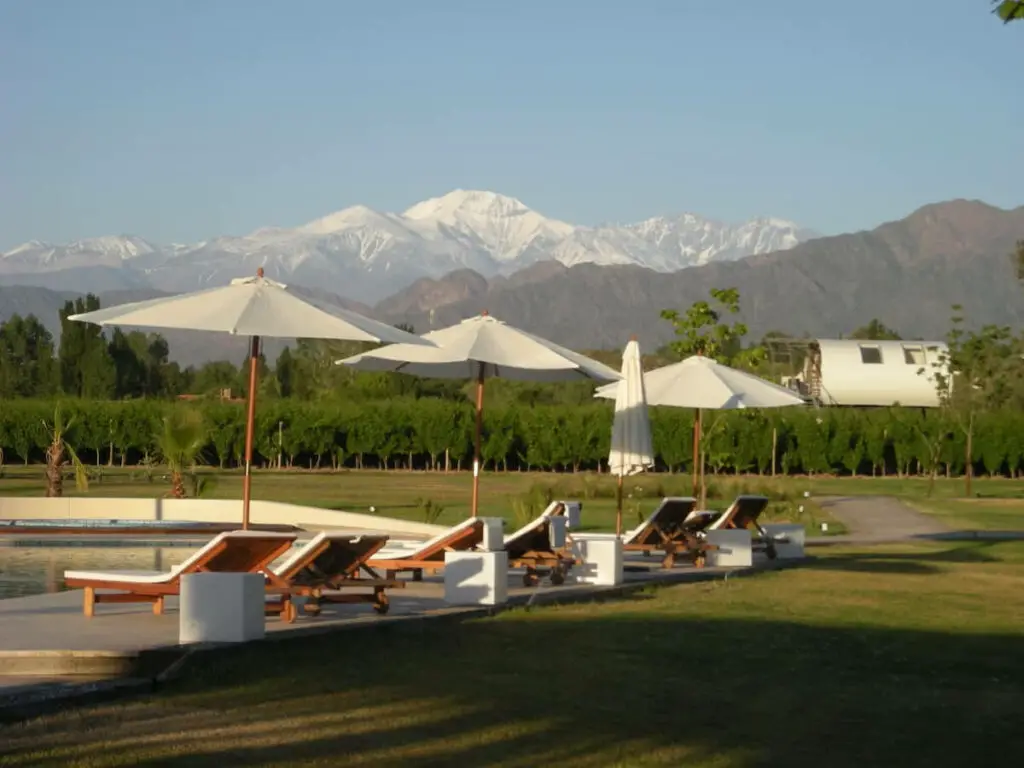
What to do in Bariloche
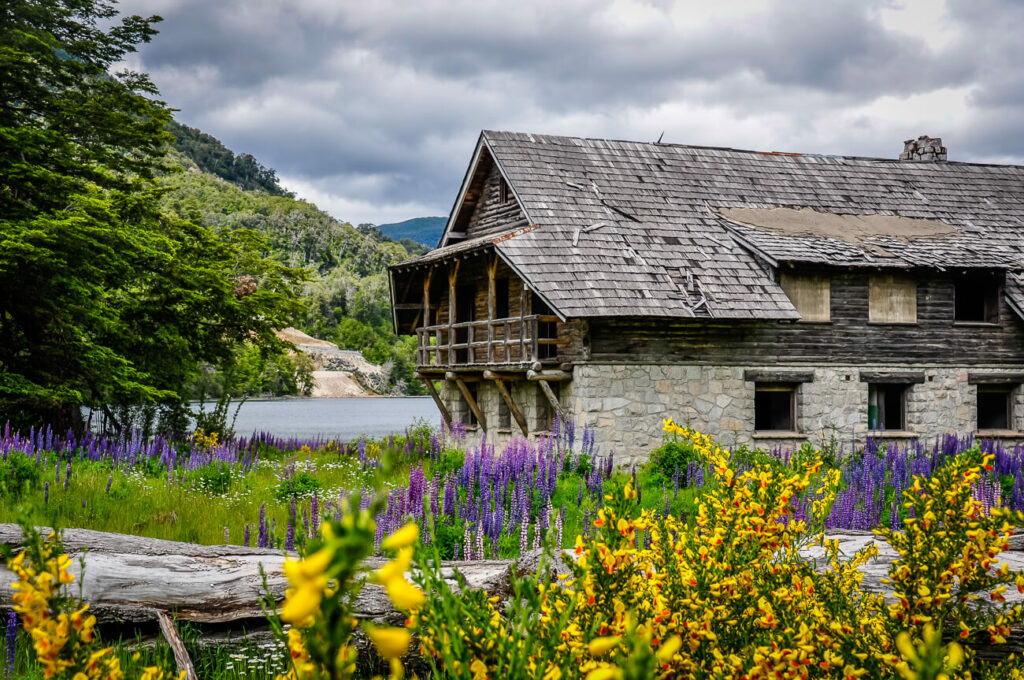
Welcome to San Carlos de Bariloche, the chocolate capital of Argentina – and one of the most beautiful places to visit in Argentina.
Start your first day by strolling around the charming Swiss-style architecture of the town, with its picturesque backdrop of mountains and lakes. The Centro Cívico is the city square with surrounding Alpine-style buildings that house the city’s main public institutions. This includes the Francisco Moreno Museum of Patagonia, where you can learn about the region’s natural and indigenous history.
No trip to Bariloche would be complete without indulging in its famous chocolate. Stroll down Calle Mitre, the main avenue, home to several renowned chocolaterías like Mamuschka and Rapa Nui. Try a few flavours along with a submarino, a type of hot chocolate that involves melting a whole bar of chocolate in warm milk.
On day two, embark on the stunning journey through the Ruta de los Siete Lagos, or the Seven Lakes Route. This scenic road trip, with its spectacular vistas of crystal-clear lakes, lush forests and snow-capped mountains, is unforgettable. Rent a car for the day or take a guided tour.
On your third day, surround yourself with even more beauty with a trip to Parque Nacional Nahuel Huapi. There are plenty of hikes in the national park. Other ideas include taking a boat across to the beautiful Parque Nacional Los Arraynes or biking or driving the 65-kilometre Circuito Chico route.
Don’t want to get active? Then spend your third day in hippie-loving El Bolson, known for its beer and homemade sweet treats and jams. It’s a 2-hour bus ride from Bariloche.
Where to stay in Bariloche
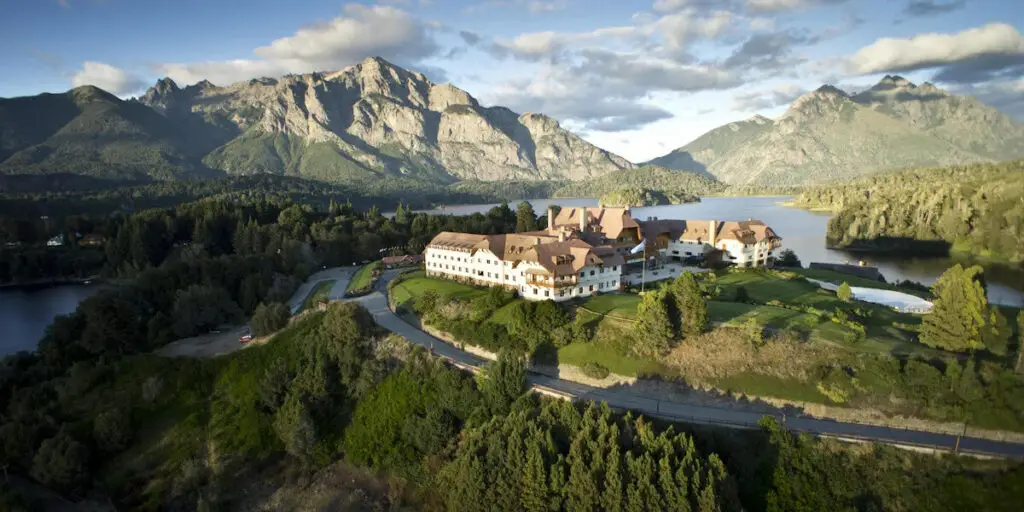
One of South America’s most famous hotels, Llao Llao has hosted many famous guests. The dramatic scenery over the Moreno and Nahuel Huapi lakes and the nearby mountains make for a stunning location. Rooms are decorated in the warm style of a mountain lodge.
Wake up to a view of sparkling Nahuel Huapi lake from your comfortable bed at Las Balsas, located near the charming town of Villa La Angostura. The blue façade of the hotel has become its trademark, and it houses rooms that feel more homely than hotel.
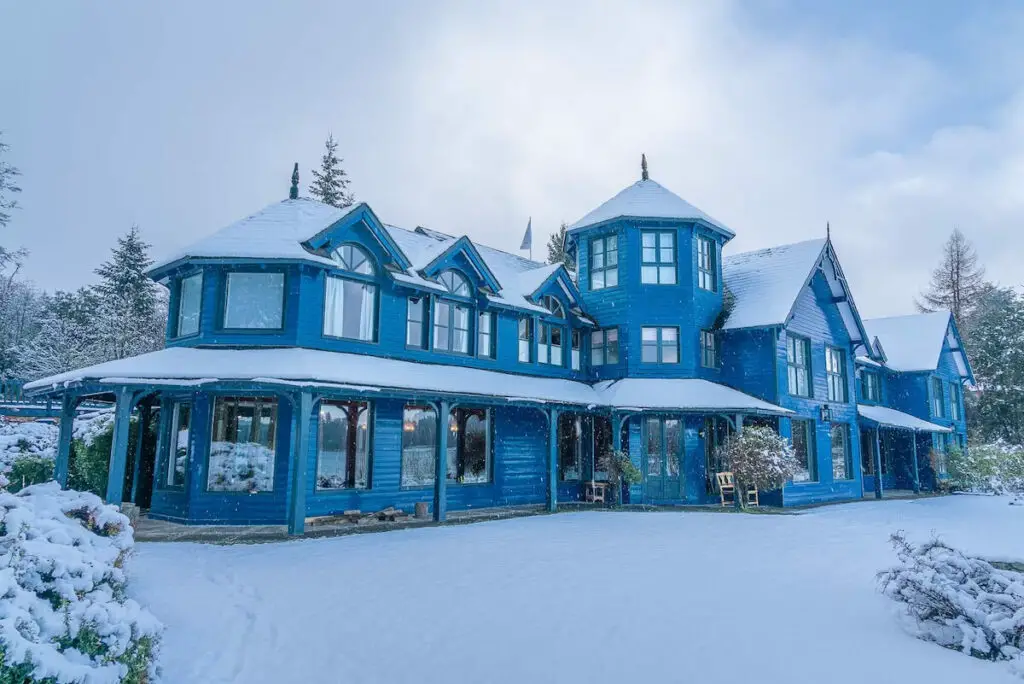
What to do in Salta
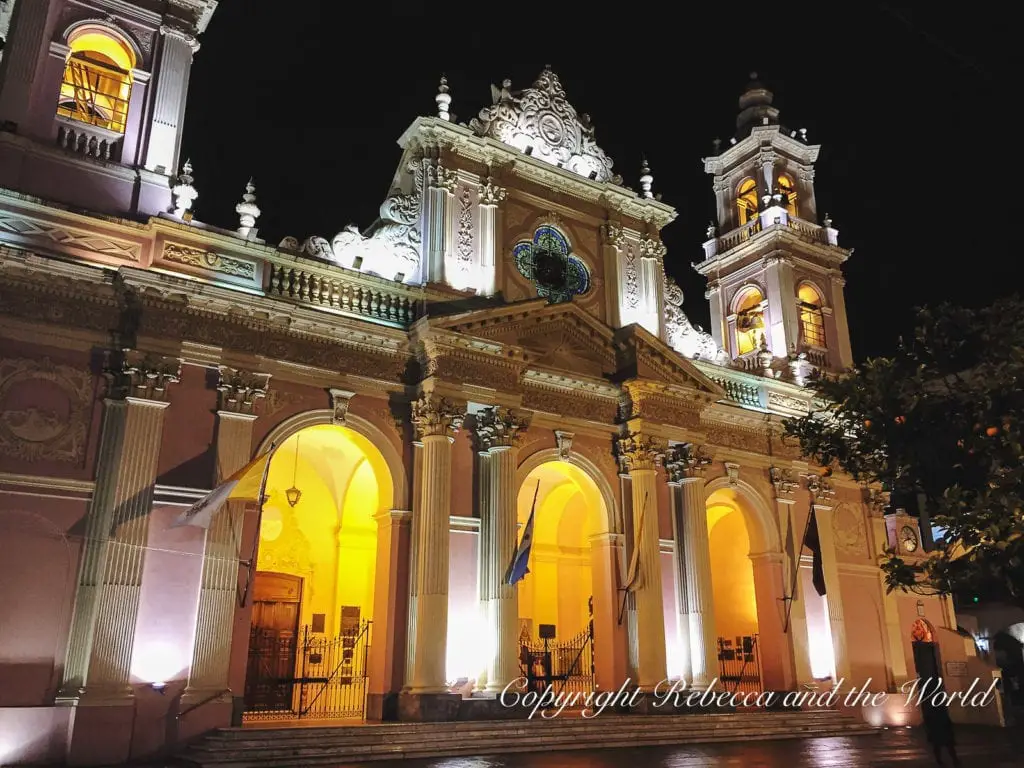
Salta is the gateway to my favourite part of Argentina: the north. Visiting here means getting off the well-worn tourist trail and exploring an area that is filled with stunning landscapes and a culture far different to the rest of the country.
Salta is a charming city known for its Spanish colonial architecture. Start your visit by taking a stroll around the Plaza 9 de Julio, the city’s main square. Here, you’ll find the striking Salta Cathedral and the Museum of High Altitude Archaeology, which houses Incan artifacts and the mummified bodies of three Incan children discovered in the nearby mountains. For a history lesson, join a Salta walking tour.
In the afternoon, head to San Bernardo’s Hill for panoramic views of the city and the Lerma Valley. You can take the cable car (teleférico) up and then hike back down.
In the evening, head to a peña (a folk music event) to get a taste of Salta’s traditional music and dance.
Where to stay in Salta
- Luxury: Hotel Legado Mítico is a delightful townhouse filled with leather armchairs, cowhide rugs and antiques. This cozy hotel epitomises stereotypical northwest Argentina, but in a sophisticated way. Check rates and make a booking at Booking.com
- Mid-range: Design Suites Salta (where we stayed) is a modern hotel with spacious bedrooms. It’s located within walking distance of the main area of the city. Book your stay at Design Suites Salta today on Booking.com
What to do in Purmamarca, Humahuaca and Tilcara
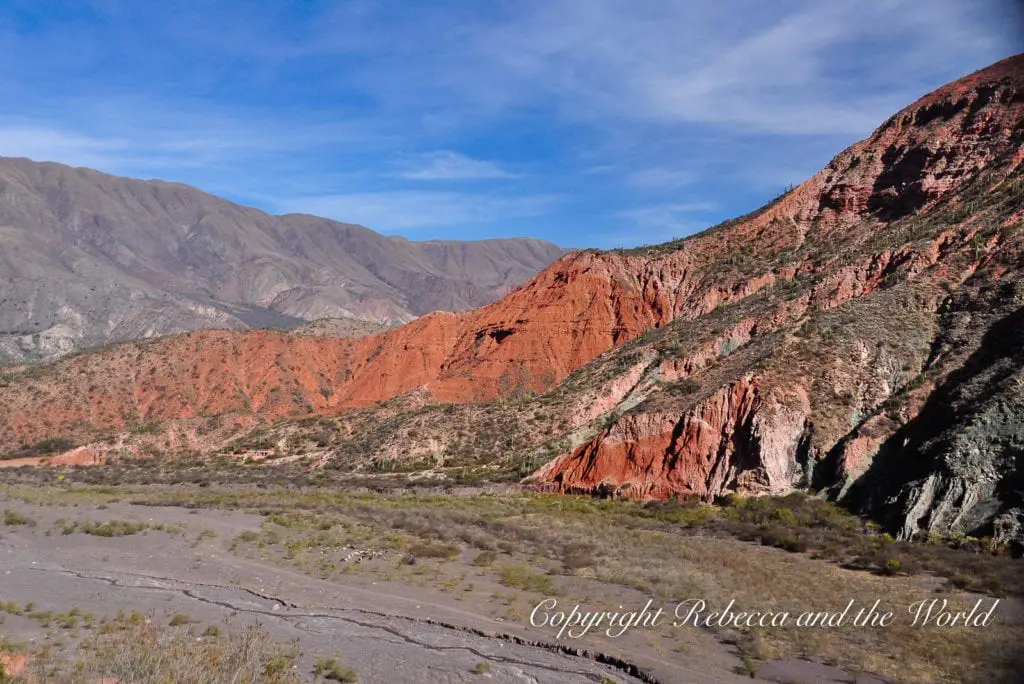
In Salta, pick up a rental car and head north to Purmamarca, a village renowned for the dramatic Seven Colours Hill (Cerro de los Siete Colores). The drive takes about three hours, but take your time and stop in at the small towns along the way.
Wander around Purmamarca and pick up rugs, blankets and other woven goods at the markets, or take the easy 3km walk around the hill.
Staying overnight in Purmamarca means you’ll have the Seven Colours Hill all to yourself once the tour buses depart in the evening. It’s a beautiful spot at sunset.
On your second day, continue north to Humahuaca, a small town with a rich indigenous history. Here, you can visit the Monumento a los Héroes de la Independencia, a towering statue honouring those who fought for Argentina’s independence. The markets here are also good, filled with handmade crafts and traditional textiles.
Driving through the Quebrada de Humahuaca is stunning.
On your way to Humahuaca, stop at Tilcara to take a look at the ruins of Pucará, a pre-Incan fortress. There’s a hiking trail nearby, to Garganta del Diablo (Devil’s Throat). The 4km walk through the canyon ends at a waterfall (which you can swim at).
Do a loop around to Salinas Grandes before heading back to Purmamarca. This expansive salt flat is the largest in Argentina and it’s fun to attempt to take those forced perspective photos you see everyone doing – we tried and failed!
Where to stay in Purmamarca
- Luxury: Located at the foothills of the Cerro de los Siete Colores, El Manantial del Silencio is designed like an old estancia. Rooms are decked out with wrought-iron beds and terracotta tiled-floors. Check the latest rates on Booking.com
- Mid-range: The views of the surrounding mountains are the drawcard of Huaira Huasi, a collection of terracotta-coloured adobe buildings. Book your room online at Booking.com
- Budget: The rooms at La Valentina are small, but you won’t spend much time in there when you can be outside admiring the views of the Cierro de los Siete Colores from the patio. Check prices on Booking.com
What to do in Cafayate
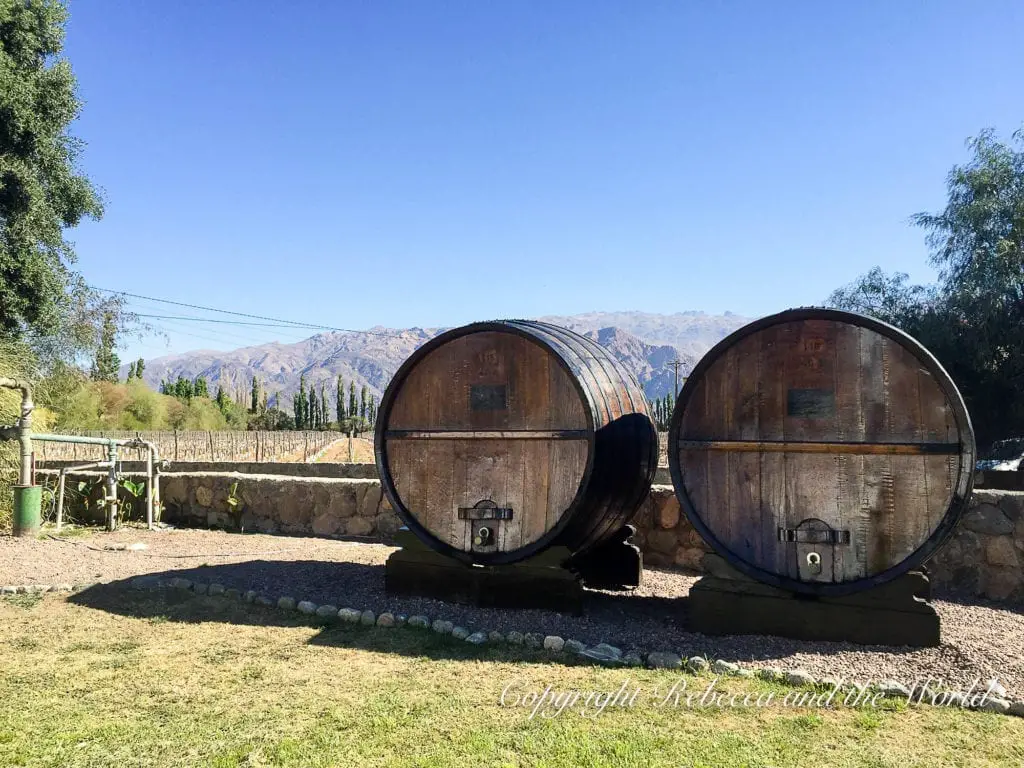
After spending time in Purmamarca, prepare for an unforgettable journey southwards to Cafayate, a tranquil town renowned for its high-altitude vineyards and awe-inspiring landscapes. You’ll pass by Salta as you head south, but you can skirt around the city.
With two days here, you can spend your days exploring the local wineries in Cafayate. Cafayate is Argentina’s second centre for wine production and a bit of a hidden gem, I think. It’s famous for the Torrontés grape and it quickly became my favourite wine to drink in Argentina. El Esteco or Piatelli are great wineries to begin with.
Cafayate itself has a laid-back vibe, with its quaint streets lined with colonial-era buildings. Its main square is a hive of activity where locals set up stalls selling handmade crafts and freshly baked empanadas, and restaurants set up tables outdoors on warm evenings.
Don’t miss the chance to explore the Quebrada de las Conchas, a valley with stunning rock formations, on your way back to Salta. Make sure to pull over at the ‘Amphitheatre’, a natural formation boasting perfect acoustics and the ‘Devil’s Throat’, a sheer cliff face that captivates with its dramatic appeal.
Where to stay in Cafayate
- Luxury: Just a few minutes outside the wine town of Cafayate, the rooms at Grace Cafayate have huge bathtubs and great views over the vineyards. Compare rates at Booking.com
- Moderate: Hotel Asturias is a country-style hotel with cute little balconies. Rooms are comfortable and it’s right in the heart of Cafayate. Book a room on Booking.com
- Budget: Book a room at Rusty-K Hostal and enjoy the large outdoor area that’s beautiful on a sunny day. Check the latest rates on Booking.com
What to do in Iguazu Falls
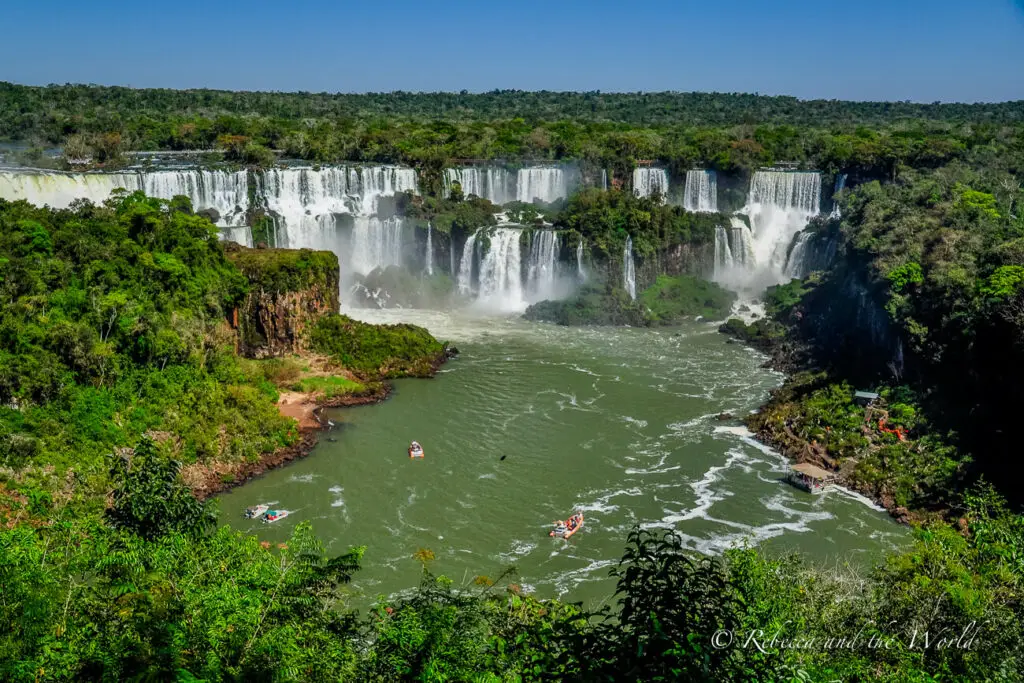
On your first full day here, head to the Argentina side of Iguazu Falls. Start early on the Paseo Inferior (the lower circuit) so you can avoid the crowds. Then head to the Paseo Superior (upper circuit). Both these circuits give you very different perspectives of the waterfalls, so make sure you do both.
You can’t miss taking the boat right under the waterfalls – prepare to get very wet! It’s a lot of fun.
End the day at Garganta del Diablo (Devil’s Throat), which I think is the biggest and most spectacular sight of the waterfalls.
The next day, head across the border to Brazil. Remember to check if you need a visa!
Your hotel can recommend a driver or this private tour can organise transport for you.
Once at the Brazilian side of Iguazu Falls, use the shuttle bus to get around. Follow the 1.5-kilometre Path of the Falls for scenic views of the falls. The path crosses almost under the falls – prepare to get wet in some parts. Pack a rain jacket! If you forget one, you can purchase ponchos (although some people are kind enough to hand theirs over once they’ve finished with them).
If you want to see the falls from above, book a helicopter ride.
Once you’re done gawking at the falls, head back to Argentina and to your hotel.
Where to stay in Puerto Iguazu
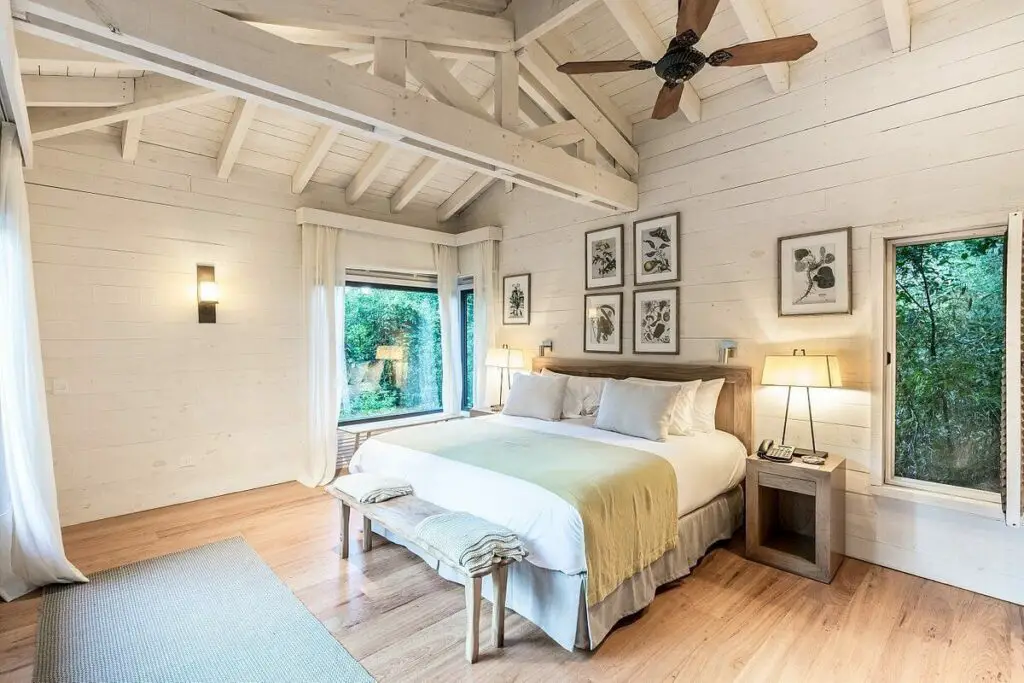
Luxury: If you’ve got cash to burn and like understated luxury, then book a villa at Awasi Iguazú. Villas are located deep in the rainforest and have private decks and plunge pools.
Mid-range: (⭐ 9.0) If you want to be located only a stone’s throw from the falls, then choose Gran Melia Iguazú. This is where my husband and I stayed when we visited Iguazú Falls.
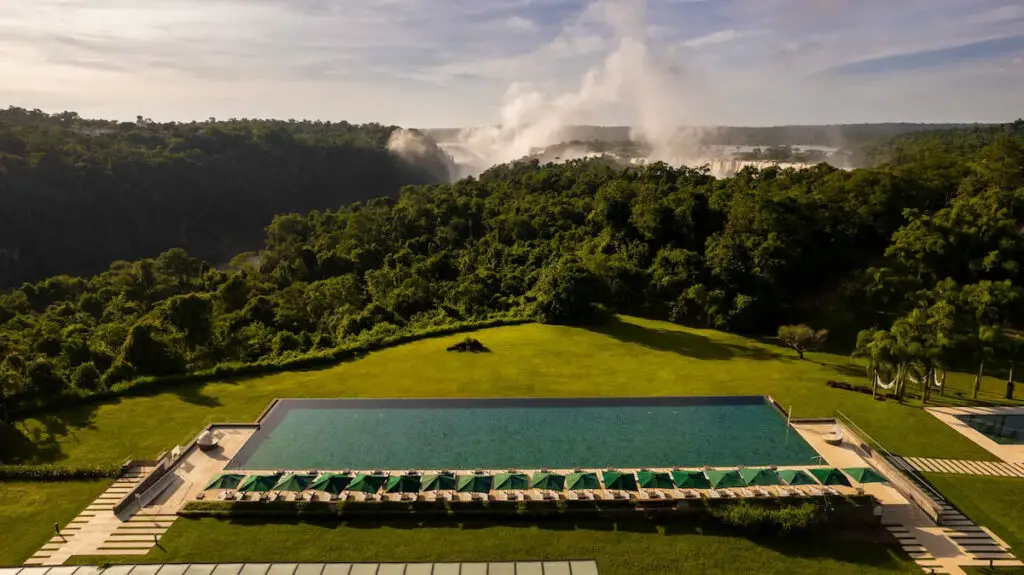
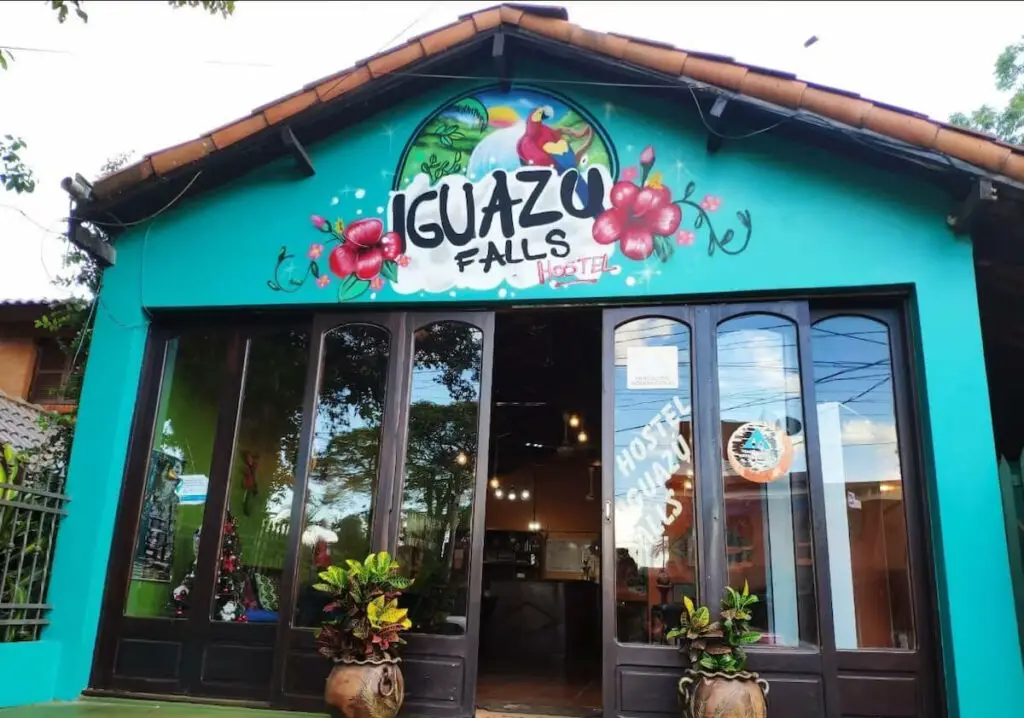
Budget: (⭐ 8.2) Simple but clean, Iguazu Falls Hostel gets great reviews from guests, and has a swimming pool.
What to do in Peninsula Valdes
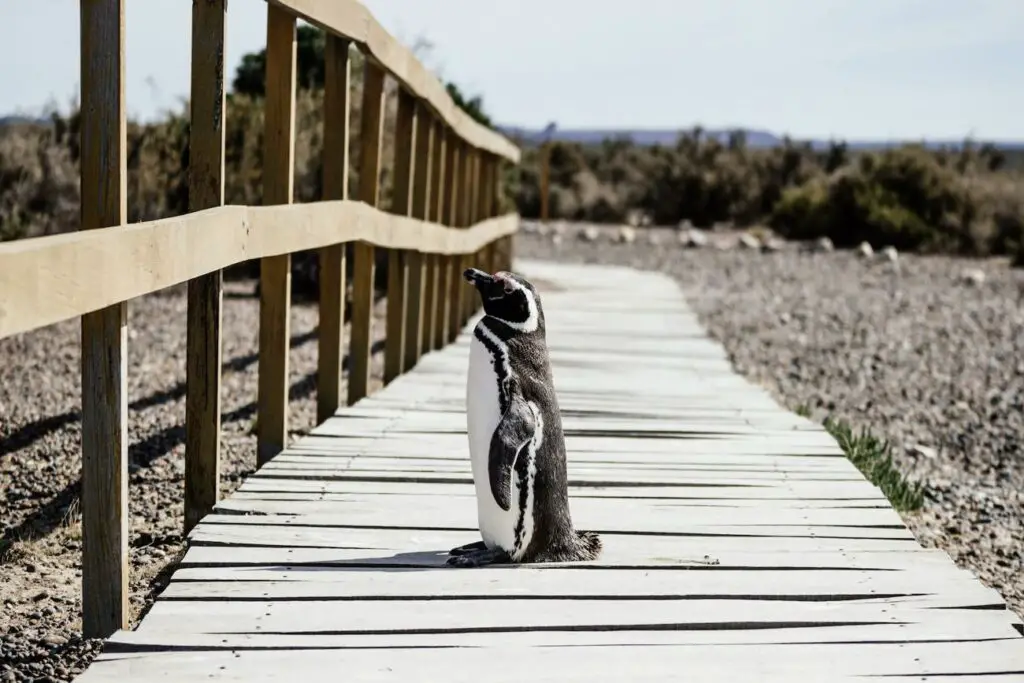
Peninsula Valdes – or the Reserva Faunistica Peninsula Valdes more specifically – is the prime wildlife-watching destination in Argentina. From June to November, this UNESCO World Heritage Site is popular for whale-watching, while at other times of the year, you can see sea lions, elephant seals, dolphins and penguins.
On your first day in Puerto Madryn, get acquainted with the city’s marine life at the EcoCentro, a centre dedicated to Patagonian sea life. Afterwards, head to El Doradillo Beach, where you can, if you’re lucky (and it’s the right season), spot southern right whales just metres away from the shore. To round off the day, enjoy the sunset at Punta Cuevas, a small peninsula offering panoramic views over the city and the ocean.
On the second day, head out for a whale-watching trip. From June to November, you can spot southern right whales, while February to April brings orcas. Make sure you pick the right tour – it’s illegal for operators to go within 100 metres of a whale or to chase them. This tour gets good reviews.
If it’s not the right season when you visit, take a wildlife tour to see penguins and other marine animals.
On your final day, take a trip to Punta Tombo, home to the continent’s largest Magellanic penguin colony. It’s a 3-hour drive south of Puerto Madryn. On your way back to Puerto Madryn, stop in Gaiman for afternoon tea. This town was settled by Welsh immigrants and is known for its traditional Welsh tea houses.
Where to stay
To visit Peninsula Valdes, you can base yourself in Puerto Madryn or Puerto Piramides.
In Puerto Madryn, Hosteria Las Piedras is family run and in a great location. Check rates and availability online.
The Oceano Patagonia luxury condos are a great option in Puerto Piramides. Book online here.
What to do in El Calafate
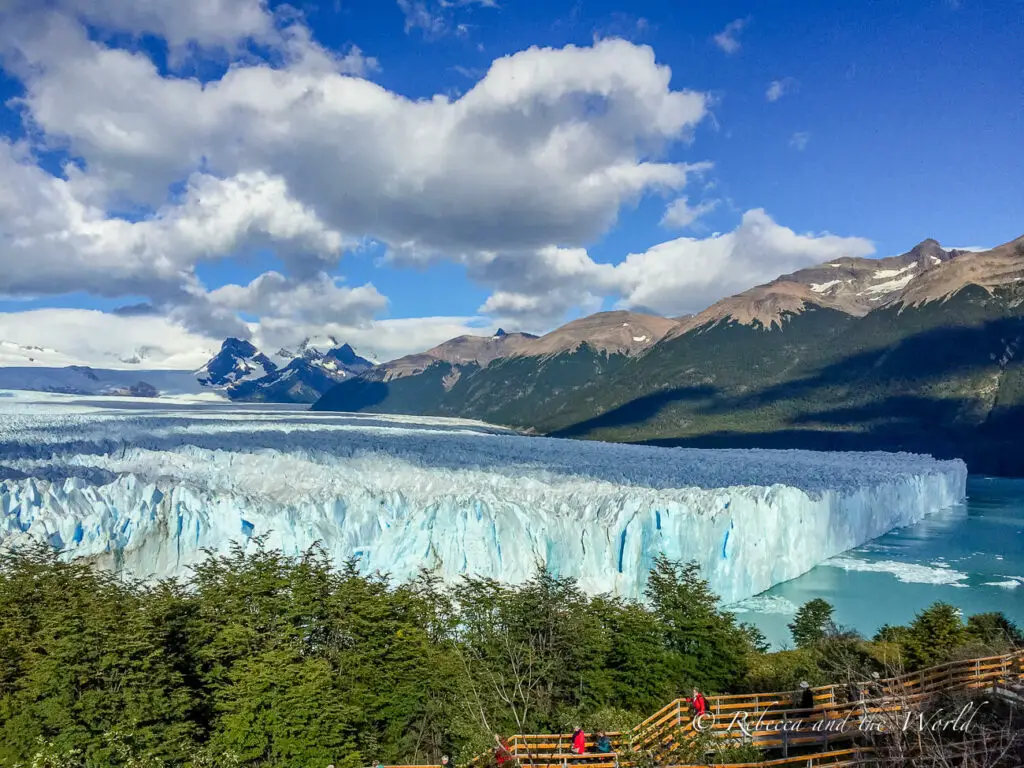
The highlight of visiting El Calafate is the chance to walk on a glacier.
Start your adventure in El Calafate by venturing out to the iconic Perito Moreno Glacier, one of the few advancing glaciers in the world. Book a Big Ice tour, which will pick you up in the morning for the drive to Los Glaciares National Park. Once there, you’ll be guided around the viewing platforms for your first sight of the glacier calving – it’s an unforgettable sight and sound.
Then, strap on your crampons for the hike on the glacier. Lunch is by one of the crystal-clear pools of water that have gathered on the glacier’s surface. The day ends with a boat tour before you head back to El Calafate.
Back in town, visit the Glaciarium, an interactive museum that offers deeper insight into the region’s glacial history. You can also wander alongside Lake Argentino and spot pink flamingos from the shore.
Where to stay in El Calafate
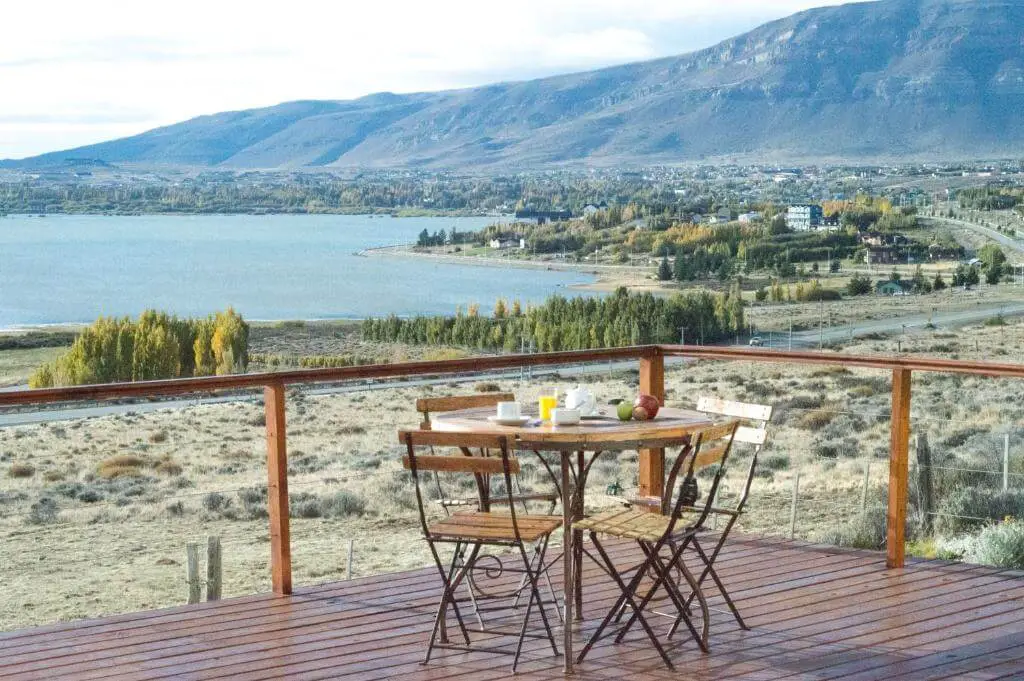
Mid-range: (⭐ 8.9) I recommend booking the stunning Hostería La Estepa, which has sweeping views over Lago Argentina. We stayed here on our trip and it was wonderful.
Budget: (⭐ 9.0) America del Sur Hostel is ideally located near downtown. The timber cabin-style hostel also has beautiful views.
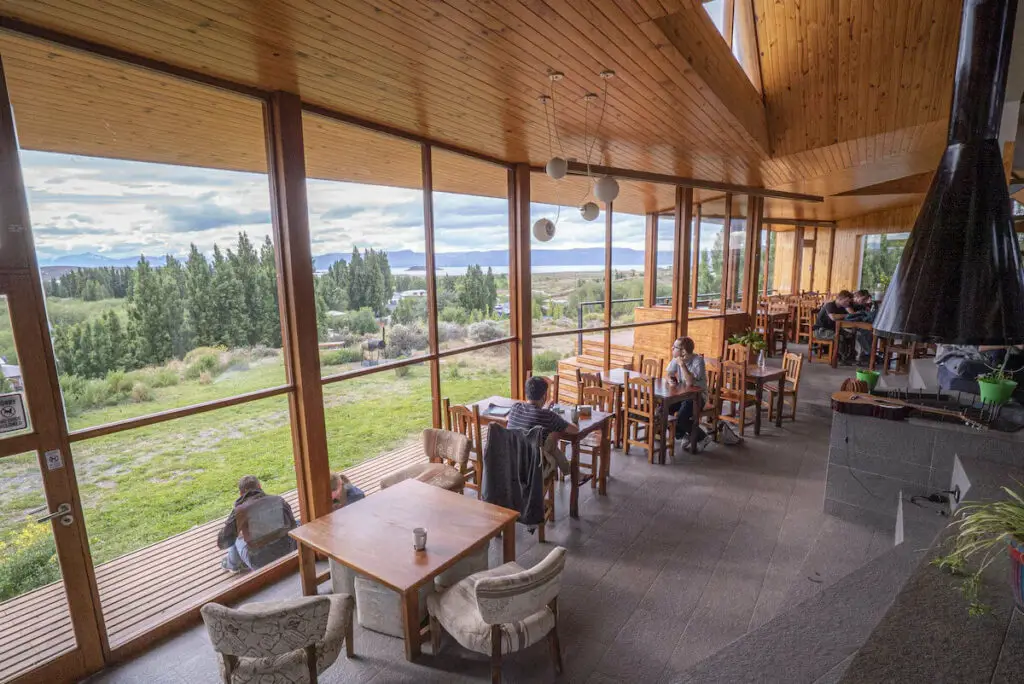
What to do in El Chaltén
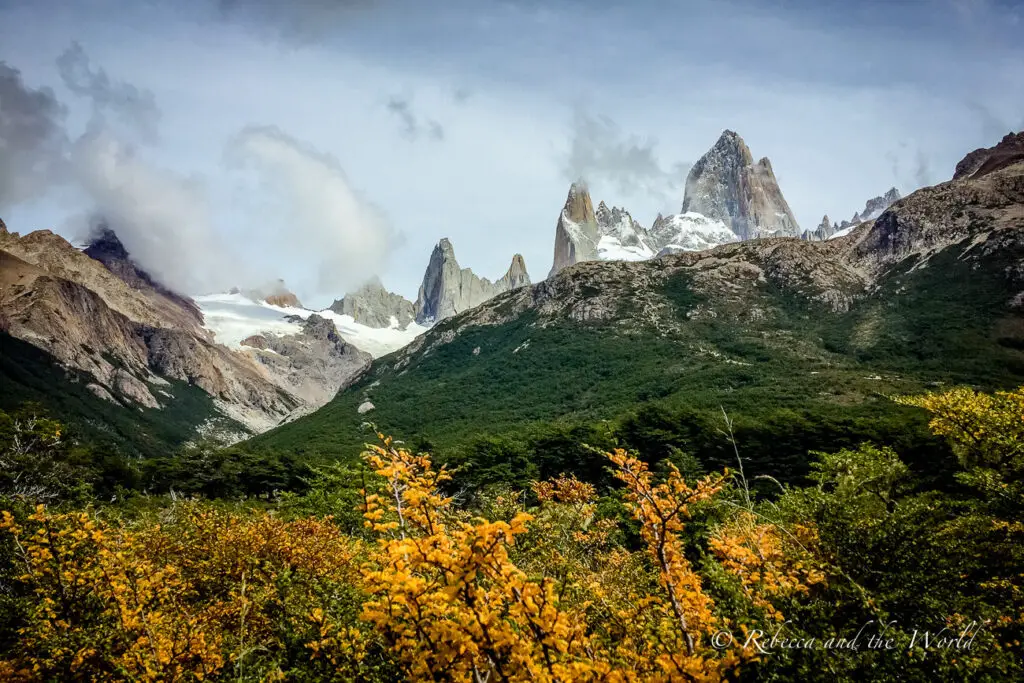
Once you’ve arrived in El Chaltén, hit the hiking trails. Argentina’s trekking capital is a gorgeous little town with plenty to fill a few days.
The most popular hiking trails lead to Mount Fitz Roy and Cerro Torre, both of which have breathtaking views at the end. You can read my full guide to hikes in El Chaltén for more details, along with additional trail options.
If hiking isn’t your thing, you can also opt for horseback riding.
Make sure you wrap up a hard day of hiking with a visit to a local microbrewery and a meal at one of the restaurants to sample the region’s mouthwatering Patagonian lamb.
Where to stay in El Chaltén
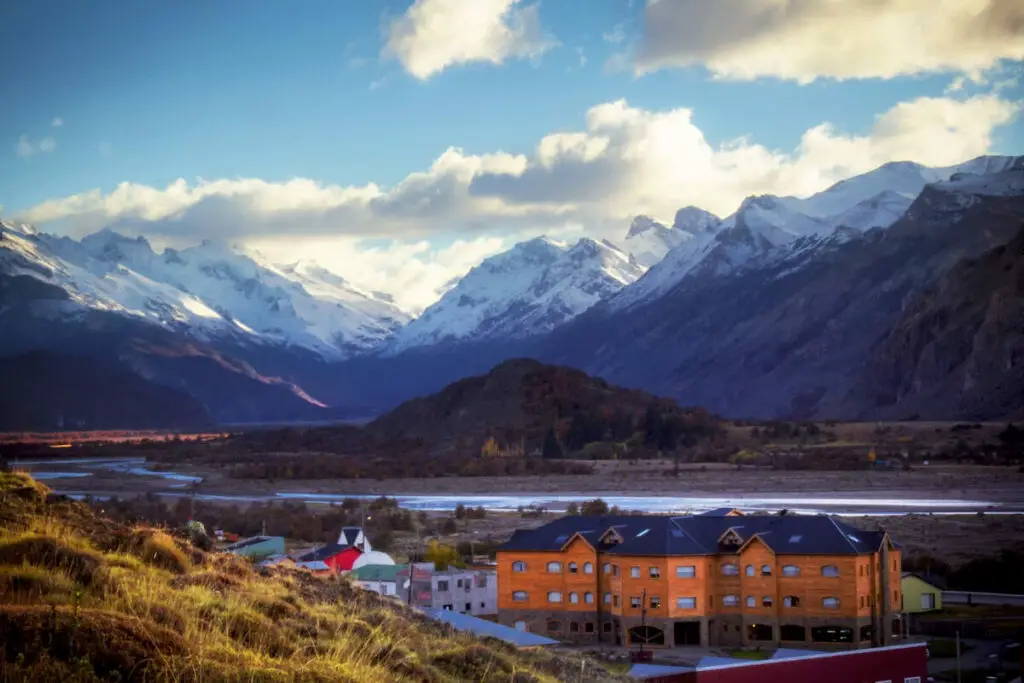
Mid-range: (⭐ 9.0) To beat the morning hiking crowds, book a room at Destino Sur Hotel de Montaña & Spa, which is located close to the trails.
Mid-range: (⭐ 9.0) The spacious, padded dome tents at Patagonia Eco Domes have amazing views of the surrounding mountains. There’s no mobile phone coverage or internet, and each dome is powered by solar energy.
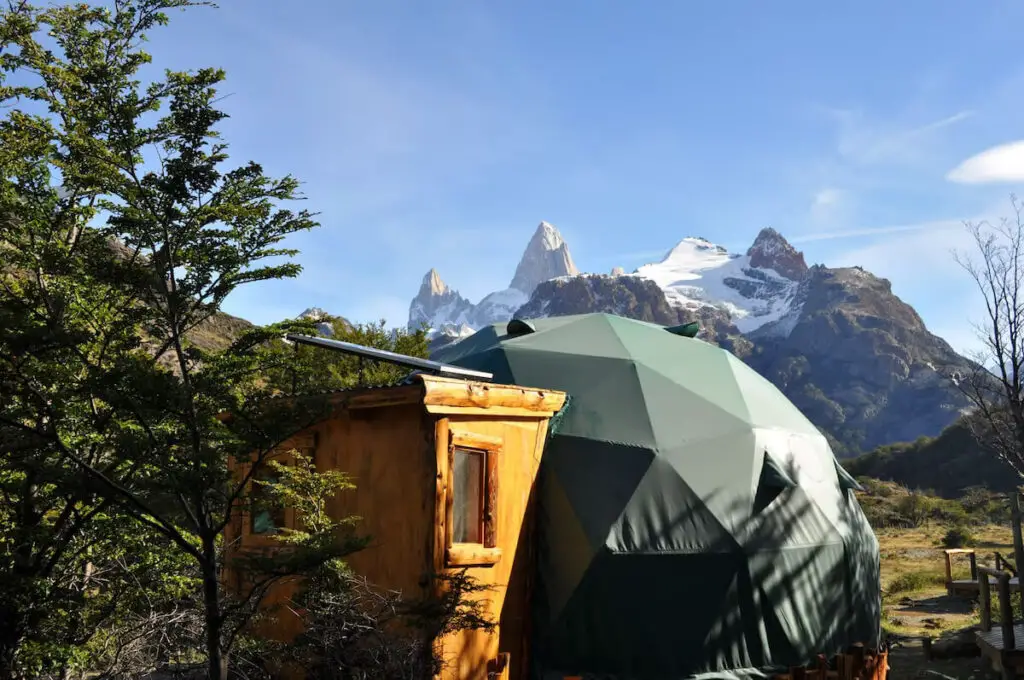
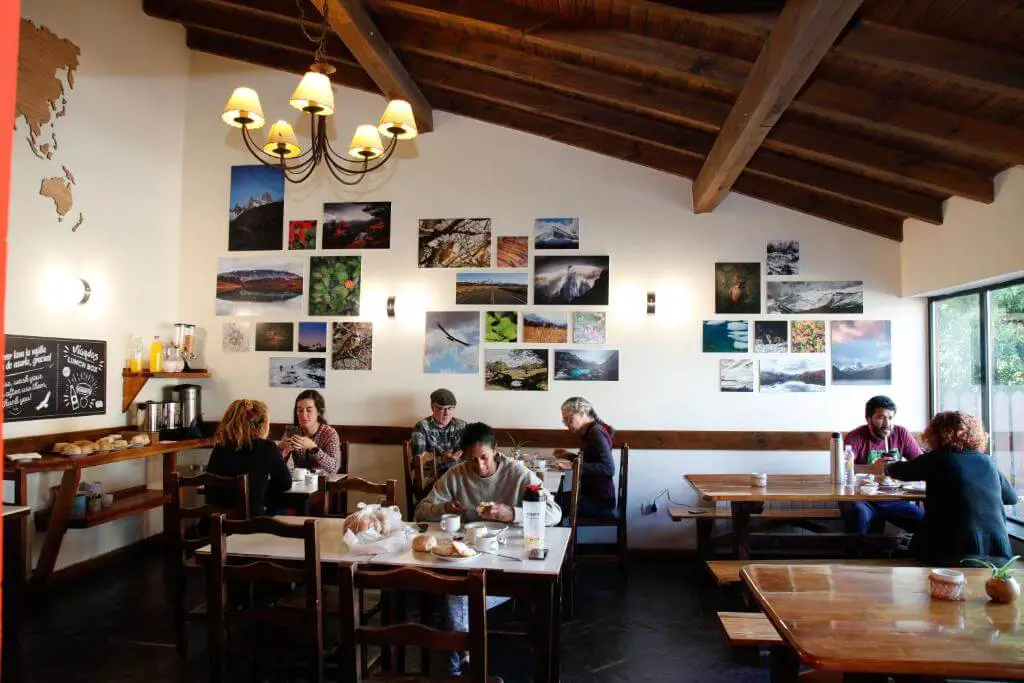
Budget: (⭐ 8.3) You’ll find competitive rates at Condor de los Andes. There’s a mix of shared dorms and private rooms, and breakfast is included in the rates.
What to do in Ushuaia
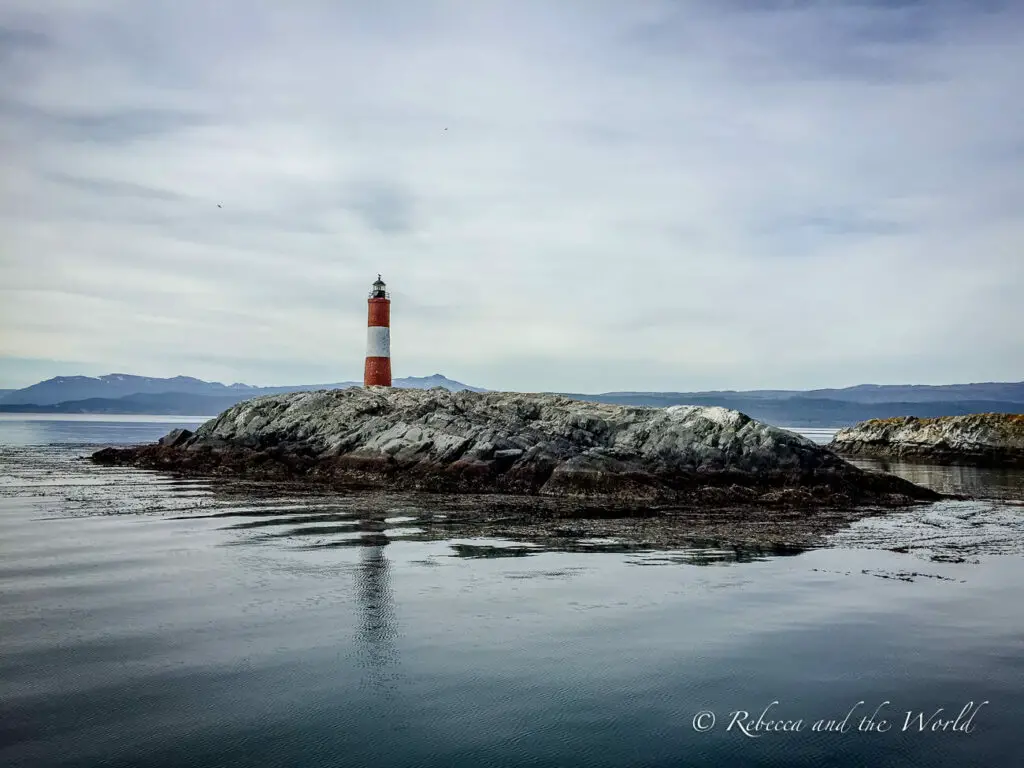
As you fly into “the end of the world”, admire the stunning views of Tierra del Fuego National Park before you decide what to do in Ushuaia.
Start your first day with a visit to the Maritime and Prison Museum, where Ushuaia’s history as a former prison colony is explored. Then, journey to the end of the world on the Southern Fuegian Railway, also known as the “Train of the End of the World”.
In the afternoon, take a relaxing and informative boat tour along the Beagle Channel. You’ll get the chance to see colonies of sea lions and diverse bird species.
End the day with a delectable king crab dinner at one of the local eateries – it’s the region’s most famous dish.
On your second day, head into Tierra del Fuego National Park. Trek along well-marked trails, soaking in the views of the snow-capped mountains, dense forests and pristine lakes and bays. There are plenty of adventurous day tours to book:
- This 4WD tour that visits areas of Tierra del Fuego inaccessible to bigger vehicles. Book online now.
- This 4×4 tour for a glimpse of the region’s natural beauty. Includes lunch and wine. Book online here.
- This small-group hiking trip to remote parts of the national park. Book the tour online here.
Where to stay in Ushuaia
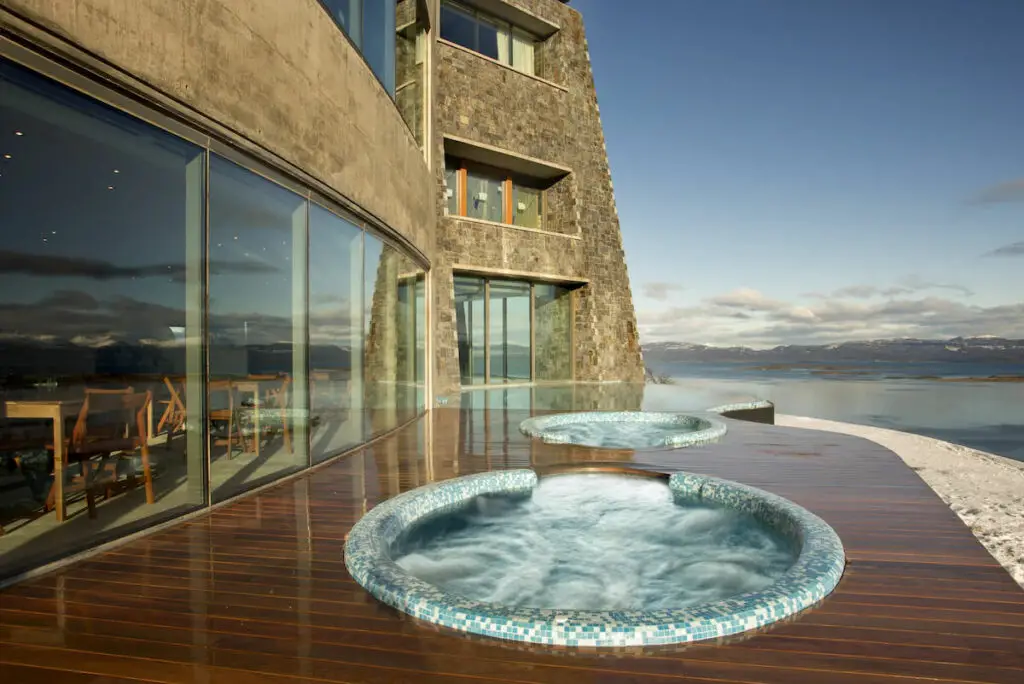
Arakur Ushuaia Resort & Spa is a luxury hotel with breathtaking views of the Beagle Channel and Ushuaia Bay. Nothing could beat a sunset dip in the outdoor hot tubs.
Wrap up: Argentina itinerary ideas
Argentina is an enormous country and I know that planning a trip here can be overwhelming. With this guide to itinerary inspiration for 1, 2, 3 and 4 weeks in the country, you should now be ready to plan the ultimate adventure to this must-visit South American country!
Argentina itinerary ideas: FAQs
Do I need a visa to travel to Argentina?
Visa requirements for Argentina vary depending on your nationality. For many countries, including the United States, Canada, Australia and many EU nations, tourists don’t require a visa for stays up to 90 days. However, always check current visa regulations with the Argentine embassy in your home country before making travel plans. iVisa can also provide advice.
Is it safe to travel around Argentina?
Argentina is safe for tourists to visit. As with any travel destination, exercise common sense and stay vigilant, especially in major cities. Always check travel advisories from your country’s foreign ministry so you have the latest info.
What’s the typical daily cost for a traveller in Argentina?
The daily cost varies depending on your travel style. Budget travellers can expect to spend around $50 per day on accommodation, meals and public transportation. If you prefer more comfort or luxury, the daily cost can rise significantly.
Can I travel with children in Argentina?
Absolutely! Argentina is a family-friendly destination with plenty of things for children to do. From exploring national parks to learning about the local culture and history, there are plenty of activities to keep children of all ages engaged and entertained.
Is English widely spoken in Argentina?
While Spanish is the official language of Argentina, English is taught in many schools and is spoken by locals, especially in tourist areas and among the younger generation. However, learning a few basic Spanish phrases is a great idea for interacting with locals.
Do I need to rent a car in Argentina?
Renting a car in Argentina isn’t a necessity, but it can mean a more flexible trip, depending on which areas of the country you’re visiting. Public transportation is extensive and reaches most tourist destinations, but remote areas are best accessed by car. If you decide to rent a car, familiarise yourself with the local road rules. Rent through DiscoverCars.
Did you find this article helpful? Consider buying me a coffee as a way to say thanks!
What do you need help with when planning your own itinerary for Argentina?
Related posts
Before you go… you might like these Argentina travel blogs:
- 50 Incredible Things To Do in Argentina
- What to Do in Buenos Aires: 101+ Ideas for Your Itinerary
- Plan a Trip to Argentina: 19 Travel Tips for First-Time Visitors
- Navigating Money in Argentina: A Traveller’s Guide to Money Matters
- Travel Insurance for Argentina: What You Need to Know
ARGENTINA TRIP ESSENTIALS
- Book your flight to Argentina online with Skyscanner. I like how this site allows you to find the cheapest days.
- Find a great hotel in Argentina. Check prices on Booking.com and Expedia online.
- Check out the huge range of day tours throughout Argentina on GetYourGuide or Viator. There’s something for everyone.
- Keep those bottles of wine you’ll be buying safe in these wine bags.
- A copy of the Lonely Planet guide to Argentina will be handy. Also pick up a Spanish language guidebook to help you navigate your visit.
- One thing I always purchase is travel insurance! Travel Insurance Master allows you to compare across multiple policy providers, while SafetyWing is great for long-term travellers and digital nomads.
PIN IT FOR LATER
Save these Argentina itinerary ideas to Pinterest for later!
